Gardening Guides
The Ten Healthiest Vegetables to Grow and Eat
Your grandparents or great grandparents most likely had a Victory Garden in their backyard. During the times of food rationing in World War I and II, people were encouraged to grow food in their back yards to ease the food shortage, and as a sign of patriotism and defiance. The garden itself was a sign of victory. It gave ordinary people a chance to feel like they were contributing to the war effort.
Today, the Victory Garden is back in style. But instead of victory over a foreign enemy, we celebrate victory over a sluggish economy, poor health, contaminated and overly processed foods. 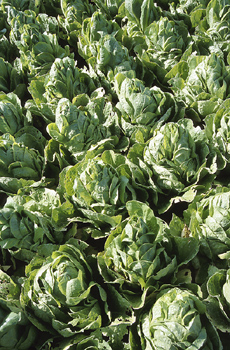 When you grow your own fruits and vegetables, you’re taking responsibility for your health into your own capable hands. Most of us weren’t raised on a farm, and gardening may not come naturally. But if you take your time, and allow yourself a few failures along the way, you’ll soon be an expert gardener and eating fresher, more nutritious foods than ever before.
When you grow your own fruits and vegetables, you’re taking responsibility for your health into your own capable hands. Most of us weren’t raised on a farm, and gardening may not come naturally. But if you take your time, and allow yourself a few failures along the way, you’ll soon be an expert gardener and eating fresher, more nutritious foods than ever before.
How to know what to grow
You’ll need to consider your space first. Some vegetables need a plot of land with room to spread out. But many can be grown in a coffee can or even an old boot! Container gardening is part agriculture, part eclectic art. You’ll also need to consider things like growing season, light and water availability, and what you plan to do with a bumper crop. Will you eat everything fresh? Or will you want to preserve, pickle or freeze some of the crop? Make sure you have the space and materials for your storage. If your freezer is full of zucchini, there’s not much room for ice cream.
Most importantly, though, what do you like to eat? And what is most nutritious? Staples like corn and potatoes are plentiful and cheap, so it’s best to put your efforts toward more nutrient dense crops. Here’s a list of the top 10 most nutritious garden veggies. Remember, a garden is a thing of pleasure. Don’t plant a veggie you hate just because it’s on the list. Substitute you favorites in.
Leafy greens
These babies are some of the easiest veggies to grow and come in lots of varieties–spinach, kale and collards are some of the most nutritious greens. “You’ll get more calcium in a bowl of fresh greens than in any dairy product,” says Dr. Brahm, a dentist in Glastonbury, CT. They’re also high in iron, potassium, and Vitamins A, B6, and C.
Broccoli
If you love broccoli, grow lots of it! Broccoli gives you plenty of calcium, iron, and magnesium, as well as Vitamin A, B6, and C. Just one cup of raw broccoli is 130% of your daily recommendation for Vitamin C.
Tomatoes
Tomatoes are some of the most popular garden residents. They contain lots of fiber, iron, magnesium, niacin, potassium, and Vitamin A, B6, and C. They’re also a great source of the antioxidant lycopene. And, well, they’re just so darn tasty!
Bell Peppers
Red bell peppers are high in potassium, riboflavin, and Vitamins A, B6, and C – in fact, one cup of red bell pepper packs an amazing 317% of the recommended daily allowance of Vitamin C and 93% of the recommended Vitamin A.
Garlic & Onions
Onions, leeks and garlic, besides being tasty, contain high levels of antioxidants and phytonutrients. Allicin (the key ingredient) is a known anti-viral, anti-bacterial and anti-fungal agent. You also get lots of vitamin C, B6 and manganese.
Carrots
Carrots are best grown in loose soil without a lot of rocks, which make them hard to grow in some areas. If you have the right conditions, they’re a great choice–very high in fiber, manganese, niacin, potassium, and Vitamins A, B6, and C.
Peas
The only downside to these common garden veggies is it’s hard to get them back to the house without eating them all. Peas are high in fiber, iron, magnesium, potassium, and Vitamin A, B6, and C. They also store well frozen, canned or dehydrated.
Beans
We’re not talking about green beans here, but the kind you can dry and store indefinitely like kidney beans and black beans. Dry beans, in general, are high in iron, fiber, manganese, and phosphorous. They are also a staple protein for vegetarians.
Sweet Potatoes
Sweet potatoes are a great source of nutrition, as long as you stay away from the brown sugar and marshmallows. You’ll get lots of fiber, potassium, manganese and vitamins A, C and B6.
Brussels Sprouts
These baby cabbages get a bad rep from kids, but these fiber-rich veggies pack some serious nutrition. They are a great source of thiamin, riboflavin, iron, magnesium, phosphorus, folate, potassium, manganese and copper, Vitamins A, C, K and B6. Vitamin C, Vitamin K, Vitamin B6,
Whether you’re trading your lawn for a garden plot or just planting a few container veggies, you can’t beat the health benefits of fresh air and fresh food.
How to Grow Tomatoes
Grow tomatoes indoors produces beautiful fruit without most of the hassle of outdoor gardening. With today’s technology and limited outdoor space, growing tomatoes indoors is a fun, exciting, and delicious hobby. In the following passages we will show you how to grow tomatoes on your own.
Growing Tomatoes
To get you started growing tomatoes we’ve put together 10 simple steps for you to follow.
1. Decide where you will grow your tomatoes. A table for growing makes your job easier, but this is not a requirement. Look for a waist high surface that allows you easy access to your plants. Make sure, if you put your plants on the floor, that the floor isn’t too cold.
2. All tomatoes have two important requirements: light and proper temperature. You will need a system of grow-lights to do this properly. Don’t think you’re dropping a small fortune on these lights — cheap “shop lights” will work if fitted with PVC tubes to focus the lights.
3. You must also worry about the temperature where your plants will grow. A heated area works best, like a warm basement or summertime garage. Tomatoes need temperatures between 70 and 80 during the day and in the upper 60s at night. Anything cooler will cause the tomatoes to grow poorly and not taste very good.
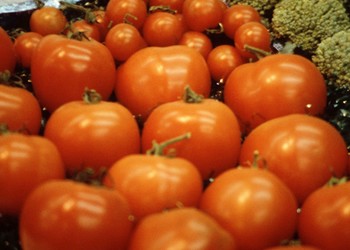
How to Grow Tomatoes
4. Germinate your tomato seeds in a small pot with any good seed starter mix. Buying peat pots is the best choice, because they can be transplanted without disturbing the roots or digging out the plant. Keep your soil mix lightly moist, but never soggy. Place three tomato seeds maximum per each pot and wait about a week for germination.
5. It is time to turn your grow lights on for about 12 hours a day. An inexpensive light timer can make this job foolproof. Your grow lights should be an inch from the top of the plant, and raised as the plant grows taller, so hang these lights on a chain for ease of movement.
6. Once your seedlings are three inches tall, they need to be transplanted into larger containers. The minimum container size should be a five gallon pot, but bigger is always better at this stage, so you should leave more room for your plant’s roots to grow. Fill the pot with new potting soil and transplant the seedlings into your larger pot.
7. Sometimes more than one seedling will sprout in each pot, so you have to play God and thin them out. Remember to leave one seedling for each pot. Be careful when removing — roots are still quite delicate.
8. You should start fertilizing your plants as soon as they are moved into their new larger pot homes. Liquid seaweed is a great fertilizer, and an organic one, especially when you have recently transplanted your plants. Liquid seaweed adds tons of nutrients and is inexpensive.
9. Water your tomato plants thoroughly, but never too often. Do not, I repeat, DO NOT over water – too much water is as bad as too little. Allow your soil to dry out between each watering.
10. Now all you have to do is wait for the tomatoes to ripen! Eat and enjoy. I like mine with a little salt and a cold beer.
How to Grow Grass
When your lawn is dead and brown or you want to revamp the look of your landscape, laying down and growing new grass is the only way to revive it. To help you with this, we’ve put together this guide on how to grow grass.
You could grow grass from seed, but that would take more time and patience than you’ve probably got.
How to Install Sod Grass
Instead, consider learning how to install sod grass instead. Yes, growing from seed is cheaper and you have a wider variety of grasses to grow from seed, but laying sod is faster and will give you a fresh lawn almost instantly.
Remove Dead Grass
Start by taking out the old dead grass and weeds. You may have to use some elbow grease and dig the old stuff out with a flat-bladed shovel, taking special care to remove the root structures.
The soil left behind after you tear out the grass will be very tightly compacted. Break it up with a hand tiller or rototiller. This aerates the ground and will allow your new sod to flourish.
Spread Fertilizer
If you have the cash, spread a fertilizer all over your newly aerated soil. So called “starter fertilizers” work best as they are high in a chemical called phosphorus. While you’re at it, throw down a layer of soil conditioner. If you have a source of compost at home or at your local recycling center, use that instead. It is basically the same thing.
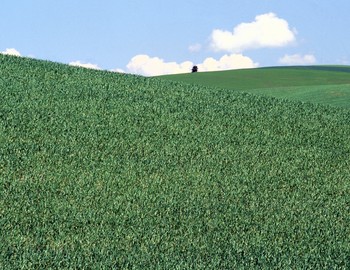
How to Grow Grass
You’re getting close. Rake your soil in order to make it level, pulling out any rocks or other junk you find. The point is to make the ground even and level, but you don’t need to get this down to an exact science.
User a Roller
If you don’t have access to a tool called a “roller”, rent one from a hardware store. Rollers have a giant drum that you fill with water to make them heavy, then roll over the soil to make it more level.
Planting Sod Grass
Now, it is finally time to begin planting sod grass. Starting at the outside edges, unroll two lengths of sod, one on the left side and one on the right. After laying two rolls of sod, roll your way towards the middle of your lawn with other rolls.
Here’s a tip — if a single roll of sod doesn’t cover the length of your lawn, just lay different rolls end to end. You can “attach” them by pressing their ends tight together so that they butt together but don’t overlap. Nature will do the rest.
Another tip you may find useful — sometimes a roll of sod will “sink” into the soil farther than you want. When this happens, immediately (but gently) pull up the sod and pack a fine layer of new soil or compost under the grass to even out your lawn.
When you finish laying your sod, get out your roller again. Roll over the sod to press it down against your soil underneath. This is a crucial step — removing air pockets, increasing your sod’s contact with the rich soil underneath, and assisting the sod’s roots in getting a foothold.
The last step in laying sod is to water every day. 14 days of daily watering or rain is crucial to the survival of your new lawn.
How to Grow Potatoes in a Container
Growing potatoes in your garden can take up a lot of space, so learning how to grow potatoes in a container lets you plant on the vertical, not just the horizontal. This conserves space in your garden for all the other, prettier vegetables you want to grow. Meanwhile, you’ll have a steady potato supply once harvest time comes.
Potato Container Growing
To begin potato container growing, first select a container to hold your potatoes in. Any kind of large tub or container should work, such as a plastic bin for storage, or even a trash can. For my money, large plastic containers fit for storage clothes for the winter, or Christmas decorations, are a good choice.
The container needs to be a throwaway container, though, because of the next step.
Drill Holes in the Container
Drill holes in the sides and the bottom of the potato container. This allows for air to get to the soil, as well as drainage after you water the potatoes.
Acquire Seed Potatoes
Buy some seed potatoes to plant in your potato container. You can use potatoes you get at the grocery store, but these tend to be treated with chemicals to reduce potato sprouts that turn off customers, so they won’t grow as well as seed potatoes.
Cut Your Seed Potatoes Up
Before you plant, cut your seed potatoes into pieces. Remember to leave at least one eye per section, before these buds are the most important part of potato growth. These may look gross when storebought potatoes grow eyes in your cupboard, but these are the buds that create a new potato.
Prepare Gardening Soil – Plant Potatoes
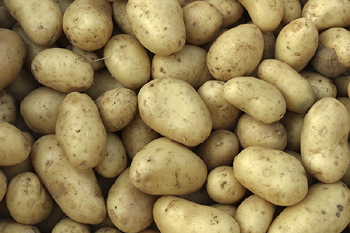
How to Grow Potatoes in a Container
Fill the potato container with roughly 4″ of soil. Place your potatoes in the soil, leaving a few inches between each. When you have your potatoes spaced, cover each with more soil.
Once you have the potatoes covered, water them.
Growing Time for Potatoes
After the last step, wait in the area of two weeks for the potato plants to grow. Weather might change the growth pattern of the potato.
Don’t Overwater
Potatoes grow best when you give them about an inch of water per week, so don’t overwater them.
Add Soil to the Potatoes
As your potato plants continue to grow, you want to gently add soil, so the leaves are just barely exposed to the air and light. Continue with this step, building up the soil, until you finally reach the top of the container. Continue to water the appropriate amount.
This should continue for somewhere around 100 days from the time you plant. When the green plants have completely died, the potatoes are ready to harvest. The dying process is the potato maturing and taking in the nutrients from the rest of the plant, so this is a good thing.
Tip the Potato Bin
Once your potatoes are ready to harvest, find an appropriate location in your garden and tip your potato container. Your ripe potatoes should spill out and make harvesting easy.
Store Your Potatoes up to 3 Months
Ripe potatoes last roughly 3 months in storage, before you need to eat them.
Growing Potatoes in Containers Next Year
Clean out your potato containers and reuse them next year. Once you know how to grow potatoes in a container, all you have to do is repeat the same steps from year to year. Each year might produce slightly different weather patterns, but these should be offset by your growing knowledge of how to take care of a potato crop.
How to Grow Pumpkins in Texas
Pumpkins are very useful things indeed. Not only do the vast majority of people buy them for Halloween in order to carve out a scary face, but they are also transformed into the traditional pumpkin pie at every Americans Thanksgiving table. Learning how to grow pumpkins in Texas requires that you understand some additional steps in the process.
Tips for Growing Pumpkins
In order to grow your own pumpkins in Texas, simply follow the simple tips for growing pumpkins listed below.
Pumpkin Growing Preparation
Allow at least three to four months for your pumpkin to grow; the longer it is in the ground the bigger it will be! When growing a pumpkin in Texas it is recommended that you plant your seeds from May to early June.
When growing pumpkins in Texas you need to make sure you have found the right location. Pumpkins thrive in sunshine and deep, well-drained soil. Your chosen location should receive about 6 hours of sunlight per day in order for your pumpkin to grow to its full potential. Ideally, you should allow the pumpkin roots up to 4 feet of growing space. However, a foot or two of soil depth and adequate moisture and nutrition would be more than adequate.
Pumpkins prefer pH of 6.0 to 7.5 but will do fine on soils up to 8.0. If your Texan soil is more acidic than 6.0 then to grow you pumpkin your soil should be limed in order to raise the pH level.
In order to avoid soggy roots when growing pumpkins in Texas, you should create a raised bed as this will allow the pumpkin more root space. This can be made by combining compost and mixed topsoil, which will also ensure that the pumpkins are receiving the nutrients they need from the soil alone.
Planting the Seeds
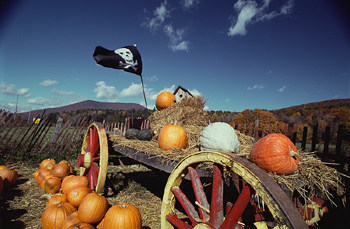
How to Grow Pumpkins in Texas
The pumpkin seeds should be ½ to 1 inch deep in the soil and should be planted in groups of about 3-5. Each pumpkin should be allowed approximately 2,500 square feet.
Managing Pests and Diseases
When growing your pumpkin in Texas you must be careful about the large amount of pests and diseases that could damage you pumpkin. A major culprit is the Vine Borers. Once these are in the vines it is almost impossible to remove them. You can try to split the vine and thus kill the bugs or inject a solution that will destroy any remaining larvae, but unfortunately nothing is guaranteed. Regularly check the plant leaves for any insects or eggs. You may find an insecticide useful for killing any found. However, you should also keep in mind that certain bugs are highly important for your pumpkins growth, for example bees.
Harvesting Your Pumpkin
Once fully mature (approximately 45-55 days after flowering), the skin on your pumpkin will harden so that a thumbnail will not easily puncture it and the colour will change from green to the normal colour(s) of the particular type or variety in question. Cut them from the vine leaving a few inches of stem on the pumpkin and make sure you store it in a cool dry place until required.
How to Grow Strawberries
Understanding how to grow strawberries is easy and rewarding. If you would like to grow your own strawberries, follow these simple steps below:
Location for Growing Strawberries
When growing strawberries you need to choose the location carefully. As they can be severely damaged due to frost, it is best to plant them in the highest area of your garden. Strong winds can also cause harm to the plant and so a shielded section of your garden is best for your strawberries to grow. Another key element for strawberry plant growth is sunshine. Therefore, you need to consider not only where the sunniest location in your garden is, but also where the sun falls for the longest duration.
For many varieties the best results come from being planted in September. However, as strawberries are particularly sensitive to frost, some prefer to wait until mid April.
The soil
It is best to check the pH levels of your soil before you plant the strawberries. The healthiest pH level for your strawberry plants is 6.5. If your soil is not currently at this level you will need to buy some good quality organic compost and mix this with your original soil. Alternatively you could choose to buy a compost bag and grow the strawberry plants directly out of this.
Planting your Strawberries
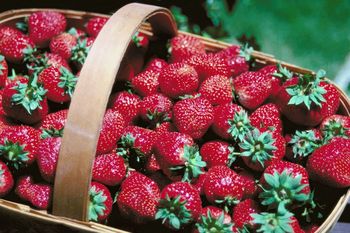
How to Grow Strawberries
You need to place your strawberries plants approximately 40 cm apart in straight rows. You must also ensure that the roots are never exposed and that they are not too high or low in the soil.
Caring for your strawberries
Before the strawberries have become properly established in the ground they need regular watering. However, once they are established (around May) they should not need any extra water. Having said this, once the fruit begins to swell they may need some additional watering again.
If using compost, extra feeding is not necessary. However, if you do feed the strawberry plants this should happen as you see the fruits forming in late spring. A weak tomato based solution is recommended, which is high in potassium. Nitrogen based feed however is not advised, as this will produce higher leaf growth rather than the required fruit growth.
Once the fruits begin to grow and begin to weigh the whole plant down, you should place straw or black plastic on the soil in order to protect the fruits from rotting. If using black plastic, make sure you pierce holes for draining.
If the strawberries are in danger of being eaten by birds, place light-weight plastic netting should over them, making sure not to touch the plants using wooden posts.
After cropping
After the last strawberry has been removed from the plant, cut everything back and remove the foliage, leaving a stump of about 10cm. This should then grow new leaves within approximately three weeks.
A strawberry bed will not last more than three years before the crop gets diseased or the fruits grow significantly smaller. Therefore, it is recommended that a rotational system is introduced, planting another crop such as rhubarb or attractive flowers.
How to Grow Peanuts
Peanuts are not something typically grown in the home and therefore it is not common to know how to grow peanuts. However, this is surprising as practically every household contains a packet of peanuts sitting in the cupboard and so why not grow your own?
Growing Peanuts
In order to start growing peanuts just follow these five simple steps.
Preparation
Your first choice needs to be which type of peanut you are going to grow. There is a choice of four; Runner, Spanish, Virginia and Valencia. The Runner is the most common choice as this is the familiar kernel size that we are used to buying from the shops, and the types used to create peanut butter. However, the Spanish type is also quite a common choice, and is mainly used as snack nuts.
After you have made your decision you can either buy peanut seeds or simply buy raw peanuts, although these need to have not been roasted. You must ensure the soil is very sandy before you plant your peanuts and that there is plenty of opportunity for good drainage. Before planting your peanuts make sure that the ground has been cultivated fully to approximately 8 inches.
Planting Peanuts
The best time to plant your peanuts is after the last frost of the year. Peanut plants need plenty of sun and so bear this in mind when considering the site where you are going to plant them.
Your peanuts/seeds need to the planted two inches deep and surrounded by a sufficient amount of compost and manure. They also need to be seven inches apart, ensuring that the peanuts stay intact else they will not grow. By placing the seeds/peanuts seven inches apart you allow each plant plenty of space to grow and their roots to spread.
Make sure that you water your peanut/seeds as soon as you have planted them.
Aftercare
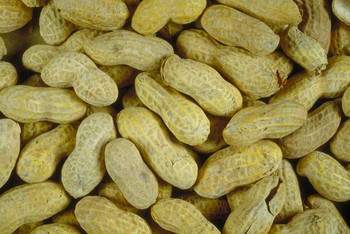
How to Grow Peanuts
Do not water your peanut plants again until they start to sprout. This process should take up to a week. After this point they need to be watered regularly but do not be tempted to over water them.
As when growing any plant, keep the area weed free to avoid any hindrance to the development of your peanut plants. It should take approximately 135 days for your peanut plants to mature.
Harvesting Peanuts
A sign that your peanut plant is ready is that the foliage will be yellow. Because peanuts grow underground you will need to pull the entire plant out of the ground to harvest them. You will be able to collect approximately 25 to 50 peanuts from each of your peanut plants
After you have collected all your peanuts, allow up to four weeks for them to dry out.
Storing Peanuts
Your peanuts need to be placed in a cool, dry place. If kept in a tightly sealed container they are able to be frozen and kept fresh until needed.
How to Grow Onions
Learning how to grow onions is one of the best ways to allocate your garden resources, because onions are used in so many recipes and dishes. You may be like me and not like raw onions in the least, but even then, cooked onions are useful in enhancing the taste in foods ranging from Italian pasta dishes to Indian curries.
If you want to enjoy the freshest onions, grow them fresh in your own in personal garden, or even on an indoor vine. Homegrown onions aren’t hard to upkeep and should be fresher and higher quality than those bought at the store. You’ll also be secure, knowing that no harmful pesticides went into the production of your crop, and therefore trace amounts of pesticides don’t end up being consumed by you and your family.
Besides that, growing your own food helps you feel fulfilled and rewarded and closer to the soil. Once you’ve learned how to grow onions, you can nurture a living entity through its natural life cycle and live in symbiosis with your property, by eating what you grow on your own land.
Why Write About Onions?
This article details all you need to know about onions and the processes used in planting onions, growing and harvesting this bulbous vegetable. I’ll give you a list of the materials and tools you need to start your onion project, along with general information about onion plants. Then I’ll list the steps necessary to the actual process of growing onions from seeds or onion part, and the planting stage all the way to harvest.
Finally, I’ll offer brief onion tips, to guide you through the process.
Learning about Onion Growth
Onions are confused with tuber plants, because the vine they grow on produces a bulbous fruit submerged in the ground for a food source. However, onions are just another form of vegetable and this bulbous fruit is the part that you cut up and eat in your foods. Onions aren’t considered official fruit, because they don’t bear seeds, which is one thing that distinguishes fruit from vegetables.
Onions are a global food. You’ll find different onions all over the world, where they find their way into food dishes in every known culture.
Onions are hardy little plants and don’t require a lot of special care, which probably accounts for their widespread dissemination. Onions thrive in environments that other plants might wither and die in. However, you’ll need to gather a few things to start your onion project.
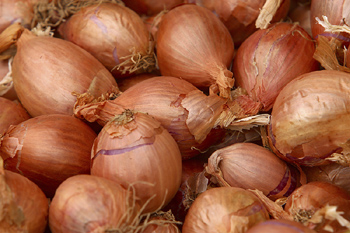
How to Grow Onions
Grow onions outdoors in a personal garden, since the fruit part you harvest grows deep in the ground compared to other, smaller plants. Onions have a vertical growth vine you must account for. However, it’s possible to grow onions in a controlled indoor environment, if you live in an inhospitable environment or if the seasons are against you.
Regardless of where you grow your onions, you’re going to need the following.
- Spade
- Seeds or existing onion plants
- Watering can
- Soil
- Manure or soil enhancing product
- Pot or plant container for indoor growth
Onion Growth Technique
Onions grow best when you start with an existing onion plant, though seeds also work, in a pinch. Seeds might be easy to come by and cheap, but they take 8 to 10 weeks longer to grow than an existing plant part.
Either way, the process is much the same. Whether you choose to plant your onion plant indoors or outside in your garden, you want an area of soil to plant that gets about 6 hours of sunlight each and every day.
Growing Onions
The soil mixture should be moderate; try 1 part soil enhancement or fertilizer for every 3 parts soil. Onions low maintenance plants, though you have to watch out for maggots and worms, which are their primary enemies.
You can insure your onion crop by adding nematodes to your soil, which eat these onion predators. Once your soil base is ready, you’re primed for planting onions.
Soil for Onions
Till the soil and dig at least 8 inches down with your spade, before you place the seeds or onion parts into the soil. Cover the embryonic plant with soil and lightly water the whole thing. You want to nurture your plants by providing roughly an inch of water every week – no more and no less.
When the plants begin to grow and the bulbs peek out of the soil, add more soil and enhancement mix to cover it back up again, allowing for further development. Harvest your crop when the tops of the onion vine are about 6 inches tall.
Keep in mind, however, that the bigger the onion bulb grows, the stronger the taste is when you eventually harvest it. This might be desirable for those who like a particularly bold onion taste, though many prefer to harvest more moderate tasting onions when considering how to grow onions.
How to Grow Rice
Rice is difficult to grow in your backyard, but it’s worth knowing how to grow rice, in case you want to experiment with rice farming. In Asia, it’s frowned on to waste even a single grain of rice, because that would dishonor the farmers, who have to spend many hours a day in the difficult maintenance and harvesting of rice. Watch any samurai movie and you’ll see how rice is treated as sacred by farmers, raiders and ronin alike.
Growing rice in your own home may not be quite so sacred to you, but if you’re going to farm rice, at least learn how to do it right. Even then, your rice production might not yield enough to serve a family meal, unless you grow buckets upon buckets of rice plants. Rice production requires space and soil, which might account for why the land is so sacred in those movies, too.
Learn how to grow rice so you can appreciate the labor-intensive and time-consuming process of rice growing. Keep in mind before you get into this that you’re buying into a significant amount of work.
Rice Options

How to Grow Rice
There are different types of rice to consider: paddy rice, deep-water rice, rain-fed lowland rice and upland rice.
Paddy rice growth is controlled by the farmer, whereas deep-water rice grows near river and other water banks and depends largely on the weather.
Lowland rice thrives in monsoonal regions where ridges are built into the land in order to retain water after the rain. Upland rice is grown in areas of frequent rain on slopes.
Most people grow home-grown rice in large buckets of water, with little dirt and a whole lot of sunlight.
What You Will Need to Grow Rice in Your Home
One upside to rice farming is that growing rice doesn’t require many materials: it just takes a long time to grow and harvest. Usually, your local grocery store’s unprocessed long grain brown rice, such as basmati and jasmine, can be grown in your home.
If you’re especially worried about how your rice will turn out, purchase rice seeds from your local nursery or gardening supply store. Planting rice also requires soil or dirt. Finally, you will need large, clean buckets in which to grow your rice.
Growing Your Rice
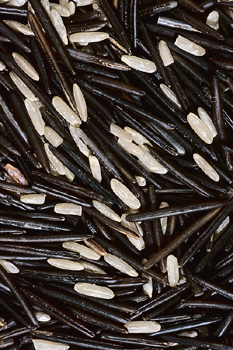
How to Grow Rice
Put 5 to 7 inches of soil in each bucket (slight larger than 1 hand deep) and place one handful of rice on top of the dirt. Cover the dirt and rice with water so that the water rises about two inches above the top of the soil. Keep your bucket or buckets in a sunny area, so the rice can thrive in a warm, sunny climate.
Check your water levels regularly and add water, if necessary. When your rice plants grow beyond 6 inches, increase your bucket level to 4 inches above the top of the soil. Let the water slowly evaporate over time, so that your plant has room to grow and be harvested.
When your plant transforms from a green to a gold color, it’s a signal to harvest the rice. Your plant has to grow for approximately 4 months, before it can be harvested.
After you harvest the rice, wrap up the stalks inside a newspaper and let them sit in a warm place for a couple of weeks. Remove the shells from the rice and let the rice simmer in low heat.
Why Grow Rice?
Learning how to grow rice is a valuable long-term activity for you and your family. Don’t try planting rice in your own yard, because it’s not recommended, unless you have a large field and can afford to lose the space. Rice is grown in small floods of water, because these floods keep rice naturally moist, without needing constant irrigation.
The combination of a great deal of water and warmth from the sun help develop the rice plants and cause rice to mature faster than it otherwise would. Growing rice in a few buckets let’s you control water and sunlight, without you having to worry about maintaining the actual terrain.
Growing rice on your own or with your family teaches everyone about the patience and art of rice-growing, as well as teach you to appreciate the wide variety of food available to you on a daily basis. Once you and your family have studied how to grow rice, go back and watch Akira Kurasawa’s Seven Samurai, or if you have kids, consider the anime based on the same story, Samurai 7, now that your appreciates how much time and trouble goes into rice production.
How to Grow Sunflowers
Learning how to grow sunflowers is an option for any garden, because the sunflower’s bright colors tend to brighten peoples’ moods and add vibrancy to any home garden. Sunflowers can grow over 20 feet tall and bloom over 2 feet in diameter. These are some of the most striking flowers you can have in your garden.
Or is a sunflower a flower?
Some people consider sunflowers to be vegetables. Others swear that it’s only a flower. Either way, sunflowers are a great asset to the gardener’s world.
Why Grow Sunflowers?
Sunflowers have many different uses. Bakers use sunflower products in their breads and cakes, while many people eat salted sunflower seeds (insides) as a convenient snack. Sunflowers are used to make fragrances, body paint and clothing dyes.
Aside from being a beautiful addition to flower bouquets, sunflowers are used for a great deal of practical purposes.
Planting Sunflower Seeds
Sunflowers are annual summer bloomers. When planting sunflowers you should choose from among Mammoth sunflowers, Mexican sunflowers, Autumn Beauties, Moonshine, Moulin Rouge sunflowers at your local gardening outfit as these tend to be the easiest to grow. Buy a pack of seeds and prepare to plant right after the winter ends.
Be sure to plant the sunflower seeds in the early- to mid-spring season, when the weather stops being so frosty. so that they can grow healthily for a mid-summer bloom.
If you want to plant sunflowers indoors, use a pot. If you want to learn how to grow sunflowers in your garden or lawn, make sure you have a lot of space, since sunflowers require it. Sunflowers need to grow anywhere between 1 to 3 feet apart from one another.
Transplanting Sunflower Seeds
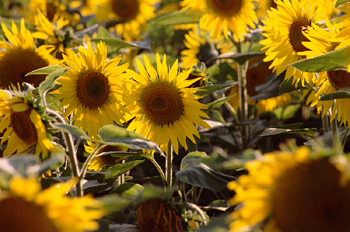
How to Grow Sunflowers
If you’re transplanting your sunflowers into the garden, make sure you plant giant sunflowers 3 feet apart. This means any new row of sunflowers must begin at least 3 feet from the giant sunflowers.
Regular-sized sunflowers can be planted two feet apart from each other (in the row), while the rows themselves should remain three feet apart from one another. Miniature sunflowers seem too small for this precaution at first, but they’ll need their room soon enough.
Miniature Sunflower Planting
When planting miniature sunflowers, plant your sunflower seeds one foot apart, but keep three feet of room between each miniature sunflower row. Make sure you choose your planting ground accordingly. Sunflowers tend to lean toward the East where the sun rises, so clear out a spot to plant your sunflowers to expose them to the morning sun.
It takes about two to three months for sunflowers to mature.
When learning how to grow sunflowers, it’s important to know that many, if not most, sunflower types don’t grow very well in sandy soil. Grow your sunflowers in rich, deep soil where they have room to extend their roots.
The quality of the soil is crucial for growing giant sunflowers, since these giants require a lot of the earth’s nutrients. In terms of the upkeep of your soil during sunflower planting, it’s good to fertilize your soil every now and then. Adding phosphorus and potassium helps the sunflowers achieve full, giant blooms in the sun.
Harvesting Sunflower Seeds
Harvesting sunflower seeds should take place when the sunflower is past its prime bloom period and starts to shrink and shed its petals. Cut the head and upper part of the sunflower stalk, so there are a few inches left for it to grow again. Hang-dry the stalks and rub together two dried sunflower heads to release the seeds of the sunflower.
Keep a few sunflower seeds for yourself. Sunflower seeds are not just for the birds, but makes a tasty snack. Sunflower seeds also add flavor to a loaf of baked breads.
Sunflowers come in many varieties and make a lively addition to any yard or garden. Growing sunflowers is fairly simple, although you have to keep in mind they can grow tall and wide.
Many counties in rural and suburban areas have fairs with giant sunflower bloom contests. Entering a sunflower contest is a fun way to get involved in your local community. You might even achieve the largest bloom in your region, if you learn how to grow sunflowers, choose your planting strategy wisely and nourish your seeds with an expert’s care.
How to Grow Thyme
Thyme is a common plant that’s grown both indoors and outdoors. Many people learn how to grow thyme as one of their first gardening projects. In case you’re a new gardener or florist and were wondering, thyme is classified as an herb.
Learning how to grow thyme is a rewarding way for beginning agriculturalists and plant enthusiasts to start their new hobby, since you can use the herb in your meals and the gardening isn’t too intensive.
Growing your own thyme is handy, since plants and vegetables you grow yourself are much more likely to be fresher and of higher quality than store bought analogs. Thyme is also useful as a gift for friends and relatives who appreciate the time and effort that went into the production of the plant, as well as the thought you gave of them.
Thyme Information and Preparation
Thyme is a popular herb, known for its strong taste affectations when applied to many foods and recipes. Thyme is most popular in Arab dishes and varies in its actual usage. Some dishes may use fresh pieces of thyme, while others require the dried leaves, discarding the stem and buds.
Thyme is known to have medicinal qualities, too, usually in the form of thyme oil. This oil has antiseptic properties and is used in products such as mouthwash. Thyme tea is prescribed as a home herbal remedy for bronchitis, though it’s suggested that a serious or chronic illness be treated by a medical professional, in addition to any natural practices you may prefer.
Preparing to Grow Thyme
You need to gather several items in preparation for your thyme growing experience. First off, you need typical gardening tools, like a watering can and spade. This may change depending on your context.
Keep in mind that thyme may not grow well in your climate, or that you may want to begin your thyme project during an off-season. Growing inside your home with potted plants is an option that eliminates the need for the spade. In this case, you need soil, pots and containers, seeds or existing thyme plants, aw well as soil enrichment materials.
Growing Thyme
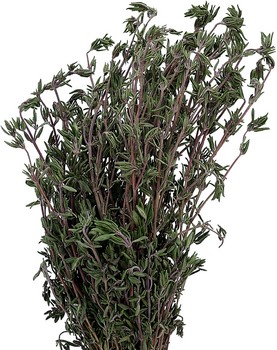
How to Grow Thyme
You can either start your growing thyme project with thyme seeds or existing thyme plants. With the latter option, you only use part of the plant in question.
When planting thyme you have the option of using part of a thyme plant, which produces more consistent and fruitful plants, though seeds have the advantage of being cheaper and easier to purchase than an entire plant.
You want plenty of organic matter in the soil that you use as a base for your thyme project, whether it’s an your outdoor personal garden or planted in a pot or container indoors. Mix in almost equal parts of soil with soil-enhancement or fertilizer. Allow your plants to get plenty of sunlight, so account for this in your placement. This is a consideration when deciding where to plant in your garden bed, or where you set the pot that contains your seeds or buds.
The soil should be on the dry side, if possible, so constructing your soil base mix and letting it sit and air out is a good idea, before you start planting thyme seeds or plant parts. After you’ve prepared the soil bed, plant each thyme about 6 to 12 inches apart, depending on your space allowance and container size.
Bury each plant about 4 to 5 inches under the soil and cover with your spade. Allow the plants to grow for 3 to 4 weeks, before you expect significant results. Watering schedules for thyme can be moderate to low.
Allow the soil to dry up almost completely before re-watering.
Pruning Thyme Plants
Prune the plants significantly as they flower. This promotes bushy plant growth and a larger yield of thyme crop. Thyme is also a perennial plant, so dividing up the plants every three or four years keeps individual plants dense and healthy.
Keep in mind that the more of the plant you cut off, the more it will promote growth. If you go through a time where your thyme demand increases, don’t fret. Even if you shear off all of your budded flowers, they quickly grow back and in greater density and numbers than ever before.
As you learn how to grow thyme, experiment with your pruning practices, so you learn the right amount of pruning for optimal thyme production.
How to Grow Tobacco
It’s time to join “Big Tobacco”, by learning how to grow tobacco plants. Tobacco has been a major cash crop through the history of the United States of America, though tobacco was a popular crop in America, before the U.S. existed. The British colonies became major parts of the British Empire, because of the profits reaped from tobacco production.
Tobacco is used for obvious applications like cigars, hookah and, of course, cigarettes, so many people are interested in learning how to grow tobacco. Growing your own tobacco is a wise decision for smokers, since store-bought tobacco isn’t as fresh and is of lower quality than the product you’re likely to harvest yourself.
Homegrown Tobacco
Much of the store-bought tobacco contains unhealthy additives and chemicals, which make cigarettes more addictive and even more harmful to your health. Besides, tobacco bought in a store is going to be expensive, especially due to the high taxes placed on tobacco, to make smoking prohibitive.
When learning to grow your own tobacco, it’s important to know the tools and supplies you need to get started, as well as the different sorts of tobacco plants you’ll be growing. You need to learn about the actual physical process of planting, growing and harvesting tobacco plants.
Our guide to growing tobacco contains additional tobacco tips and concerns, to maximize your success.
Tobacco Disclaimer
Remember, smoking tobacco has been shown to cause cancer. Ingesting smoke is patently unhealthy, whether you’re ingesting store-bought or homegrown tobacco. Different methods of smoking tobacco have different grades of risk, but that’s not meant to imply any type of tobacco smoke is “healthy”.
From the John Rolfe’s “Orinico” tobacco planters in early 1600’s Virginia to the 21st century smoker, tobacco smokers have tended to develop cancer and other illnesses more often than non-smokers. Smoke tobacco at your own risk.
Preparing to Grow Tobacco
Tobacco has been cultivated and smoked for centuries either in pipes, dips or rolled cigarettes. Tobacco is harvested from nicotiana leaves and is an extract from a plant rather than a plant type itself. Tobacco is a resilient plant and, in America for instance, is grown in a variety of climates.
However, warmth, dampness and plenty of sunlight are the conventional requirements.
Several items and ingredients are required for you to finish preparation of the tobacco growing process. You need the requisite tools with which to do the job. Depending on where you live and whether you choose to start a large-scale growing operation in an outdoor garden, or a modest potted plant setup inside of your home, you need the following, though obtaining all of these things should prepare your for any circumstance.
- Spade
- Watering can
- Tobacco seeds
- Soil
- Soil enrichment product or manure
- Plant pots
Growing Tobacco Indoors
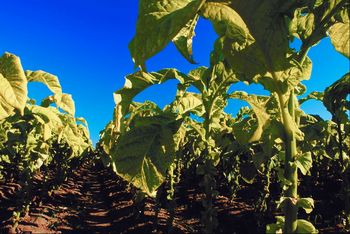
How to Grow Tobacco
Remember that tobacco yields fairly large crops. It’s possible to harness and prune your plants down to a size for conventional indoor growth, though this requires a lot of extra work and isn’t natural for the regular growth
However, some people grow tobacco indoors and allow it to grow to full height, if they have the facilities with which to do so. If you want to do this, you need a fairly elaborate setup of large potting containers, timed lighting systems and timed watering systems, as well as a large unused room, like a basement to grown the tobacco in.
Growing Tobacco Outdoors
I’m assuming you’re going to grow your tobacco outside, though these instructions can be tailored to inside growth methods, as well, as you learn how to grow tobacco. Tobacco grows best where there is soil that drains well and lots of sunlight. In preparation, till your soil well, choose a planting area advantageous to daylight.
In case you’re growing in potted containers, add a thin layer of gravel to the bottom of your plant housing to allow for drainage. Next, plant your seeds. These seeds are easy to obtain from a local plant orphanage or other type of agricultural store.
Each seed should be planted in the soil about 1 inch deep and spaced about 24 inches away from each other, so they don’t interfere with the other plants, when they begin to grow. Tobacco requires rich soil and fertilizer.
Tobacco Fertilizer
Using manure, fertilizer or any other type of common soil enrichment product generously is a good idea. In fact, even after the initial planting stage, regular administration of this type of product ensures healthy and prosperous growth of your tobacco plants.
There are special fertilizers designed for use with tobacco. These should be easy to find in the same place you buy your seeds. Be sure to water your tobacco plants with ½-1 inch of water per week, depending on your climate and the aridity that each plant experiences.
The only other important step, besides regular application of fertilizer and water, is pruning the plants. Tobacco grows terminal buds that stop or stunt the growth of tobacco leaves that you want to harvest, so use pruning shears to nip these buds and ensure your leaves grow lush and plentiful.
Harvesting Tobacco Plants
The final step when learning how to grow tobacco is the tobacco harvest. Harvesting is as easy as removing the leaves and drying them with either a dehydrating machine or by hanging them in a dry room.
How to Grow Wheatgrass
Learning how to grow wheatgrass is a way of having the vegetables that you want, without having to go to the store to buy out-of-date or low quality products. It’s rewarding to grow your own vegetables, if you have the time and energy to devote to nurturing produce, growing and harvesting them the correct way. Having a garden is a good way to enjoy nature, remain active and soak up some sunlight.
Learning how to grow wheatgrass is an activity to do with friends, where you can compare notes on specific ways to grow your wheatgrass and how you’ve experimented with different styles of growth or harvest. Wheatgrass produces so many different yields, that comparing notes is useful between planters. Consider starting your own gardeners club in your local community, to encourage this kind of communication.
Wheatgrass Facts
The following are a few wheatgrass facts. Wheatgrass is the grass produced by and adjacent to wheat plants. However ordinary seeming, wheatgrass is consumed by humans and animals for nourishment. Wheatgrass is thought by many to have medicinal properties.
Why Eat Wheatgrass?
The plant itself is a good source of chlorophyll, minerals, enzymes, vitamins and amino acids, though the extent of its effectiveness as a medicine or dietary aid varies depending on the source. This is a matter of debate among the growers and consumers of wheatgrass.
Some believe that wheatgrass has unique curative properties, while others disagree. Wheatgrass is marketed as a healthy product. Bars and juices sold as health foods make sure to include wheatgrass as a primary ingredient, because of its reputed benefits. Extracts from wheatgrass in powder form are also sold by health food stores.
When and Where Is Wheatgrass Grown?
Wheatgrass is best when grown as a natural byproduct of wheat or barley plants of the corn family, though it can be grown on its own. Since wheatgrass is not a large crop, you can grow it indoors in pots or plant containers.
If the seasons and environment are in your favor, you can grow wheatgrass outside in your own personal garden. Either way you decide to go about it, you need similar items.
- Watering can
- Spade or digging tool
- Manure or soil enriching product
- Soil
- Wheatgrass seeds
Additionally, if you choose to grow indoors, obtain a pot or container for your soil and plants.
Growing Wheatgrass
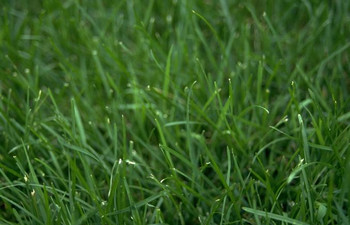
How to Grow Wheatgrass
When growing wheatgrass, the first thing to do after purchasing your wheatgrass seeds from the nursery is to soak them in water. Fill a jar or container about halfway full of water. Soak all of the seeds you want to plant for about 8 to 12 hours.
Preparing the Soil for Wheatgrass
Next, prepare your growing area. With grass-types of plants, you don’t need to worry much about the spacing of the seeds, or making specific rows in your garden or indoor potting system. In nature, these seeds are spread by the wind and through animal feces, so they are evolutionarily designed for randomized growth patterns scattered among different parts of the soil.
You want to use your soil and soil enhancement product in a 3 to 1 ratio or three portions soil for every equal part soil enhancement or manure.
Wheatgrass isn’t an extremely mineral-demanding plant, so don’t go overboard with the soil enhancement. Whether you do this in an indoor tray/pot or outside in your garden, the concept should be about the same. If you’re constructing the soil base in your home in some sort of container, you have more control over the portions of soil and other contents, as well as the disbursement of seeds and growth pattern.
Planting Wheatgrass
After the seeds are done soaking, till the soil lightly and with moderate vigor, using your spade or a similar tool. Spread the soaked seeds over the soil. You don’t need to bury the seeds, because this might be detrimental to the growth cycle and progress of your eventual plants.
Instead, take a mixture of soil and soil enhancement product and lightly spread it over the seeds, not necessarily completely obscuring them. Add enough of your soil mixture to somewhat cover, but where you can still tell the seeds are still there. For this process, you can use peat moss, if you have access to it.
Lightly water the entire patch with your watering can. A spray gun is another optional tool, as you can lightly water the plants with it. Carry on with light watering once in the morning and once in the evening, keeping the plants out of direct sunlight.
Some shade helps these plants thrive, though complete darkness gets you nowhere. Eventually, usually 10 to 12 days later, your grass will grow about 7” long. Harvest your crop by cutting ½ inch above the soil and enjoy the fruits of your labor.
How to Plant Bamboo
Learning how to plant bamboo is something you might not ever have considered, but a bamboo crop has many applications you wouldn’t immediately consider. Although bamboo is more commonly grown in the east than the west, more North Americans have started to grow bamboo in their own local gardens in the past generation or so.
You might not have known this, but bamboo can be used as a cooking ingredient. Of course, bamboo is more famous as an arts and crafts material. This makes bamboo a versatile crop which can be enjoyed by a number of different people.
Learning how to plant bamboo is a potential activity for your whole family. Planting and taking care of your own bamboo crop can be an educational experience for your kids, as they watch it grow and develop over time.
Read ahead and learn everything you need to know to plant your own bamboo crop. Read how to take care of bamboo before harvest, including preparation for the planting and the eventual growth of your plants, as well as the resources you need to start.
We then highlight the process of planting, growing and harvesting your own bamboo plants the correct way, in order to collect the best yield of bamboo.
Getting Ready To Plant Bamboo
Bamboo is grown from seeds or from sapling bamboo plants. Buy both of these things at your local agricultural store or plant nursery. Seeds need to germinate before developing and maturing. This adds time to the growing process.
Depending on your climate and when you decide to begin growing your bamboo plants, you may not have this time to spare.
Decide where you’re going to grow your bamboo plants. Keep in mind these plants can get large if not pruned and harvested regularly, so growing outside is best. Bamboo is susceptible to pests, though, especially those native to America and considered foreign to bamboo.
Growing bamboo inside allows you the most control, but it also requires a lot of work. Not everyone has the facilities and resources to grow inside.
You need some basic things to begin growing your own bamboo.
- Soil
- Fertilizer
- Watering Can
- Spade
- Seeds/Sapling
- Pot/Plant Container
Growing Bamboo
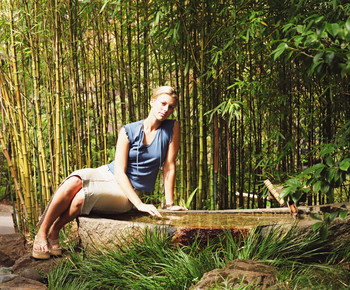
How to Plant Bamboo
After you learn how to grow bamboo, decide where to plant your crop. Bamboo planted in the outdoors in some type of garden is harder to protect and, depending on the weather conditions of your area, can be frail. Growing bamboo inside requires a lot of hard work and attention, as it tends to grow quite quickly, compared to other plants.
Another early decision to make is whether you’re going to grow your plant from an existing specimen or from bamboo seeds. Once you make these two decisions, planting of bamboo is easy.
Preparing the Soil
Till your soil. Remove any harmful organisms, such as weeds. These organisms compete with your bamboo plant for minerals, water and sunlight and can kill the bamboo.
Mix in some fertilizer or other soil enrichment product, the recommended options being compost or manure, with the soil you intend to plant with.
Planting Bamboo
When planting bamboo, first you’ll need to dig a spot for your potential bamboo plant. For seeds, you need only plant them 2-3 inches into the soil. For planting existing bamboo sprouts, dig a hole 6-8 inches into the ground. Established plants have root systems and bases, while seeds have not yet developed.
Cover the seed or sprouted plant’s base with soil and soil enrichment product mix. Water the area lightly with your watering can.
Caring for Your Plant
Maintain your plant by watering it with about 1-2 inches of water per week. Keep an eye out for pests, or anything else that might harm your plant. Expect to see some growth results in as little as one week, depending on what you started with. Bamboo tends to grow quicker than most other plants.
Harvesting bamboo requires shears to cut off stocks of the plant. If you have more than one plant, harvest bamboo stalks a bit of a time off of each of them, rather than overharvesting one plant. Taking all the bamboo off one plant can potentially overwhelm it, causing the plant to die.
Use the bamboo as a material for various products, once you’ve harvested it. Bamboo furniture and other crafts are a popular choice. Gifts made with bamboo that you grew yourself is a creative conversation piece. Learning how to grow bamboo is an economical choice, but you’ll find other reasons for growing your own bamboo.
How to Plant Flowers
Flowers come in so many shapes, sizes and varieties, it’s hard to generalize about the best care methods for flowers. That’s one thing that makes the process of learning how to plant flowers so interesting, though becoming an amateur florist can be frustrating at times.
Given the wide scope of flowers, it’s no surprise that many people plant different types of them every day, either in indoor plant and potting containers, or in their own personal gardens. Different flowers might require entirely different growing environments or care techniques, but you’ll want to take the extra trouble, to increase the beauty of your house and yard.
While not as practical as growing an edible plant or a plant used for some physical use in craftsmanship or medicinal use, growing flowers can be a worthwhile pursuit in and of itself. Flowers may not bring sustenance, but they have a sensual: the senses of sight and smell. Your add color to the place you live, but you also add a variety of pleasant smells.
Flowers make great gifts for friends and family, who will appreciate the time and care that went into growing your own flowers.
Planting Flowers – Beginning
Flowers come in many species and tend to be annual or perennial types. Decide if you want to grow flowers that can survive every year, or that grow back each growing season. Narrow down the types of flowers you want to grow, to make your first growing experience easier.
If you’re trying to grow many types of flowers at once, each with their own needs and care regimens, it’s easy to get confused. Decide whether or not to grow plants indoors or outdoors, though many people do both.
When researching how to plant flowers and which flowers to plant, be sure to take your area’s climate into account. Many flowers can be grown from seeds, though many people buy a young plant from an agriculture store or plant nursery and raise the flower from there. This eliminates the germination and waiting periods, if you don’t have the patience for seed-grown flowers.
You need some basic implements to get started planting flowers, including:
- Watering can
- Spade
- Soil
- Fertilizer
- Pot/plant container
- Seeds/young plant
Planting Flowers
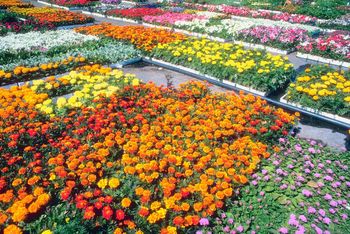
How to Plant Flowers
Learning how to plant flowers is an easy process, after you’ve eliminated a few key choices. First, decide whether to grow inside your home or outdoors in your garden.
Each has pros and cons. The former allows you more control over the hospitality of the environment your flowers live in, though the latter affords the plants more independence and doesn’t take as much of your time and energy.
Seeds or Sprouts
Second, decide whether you are going to grow your flowers from seeds or from existing sprouts or mature flower plant specimens. Again, there are advantages and disadvantages to each, given the time frame you have to work with. If you don’t have much of a growing season available, or you decided to plant your flowers late in the existing season, starting with a somewhat grown plant isn’t a bad idea.
This can take some of the excitement of watching your seeds first sprout. But once you have made these decisions, you are ready to plant your flowers.
Planting procedure varies little from species to species, so plant most plants the same way you would the plants you’ve already planted. Once planted, though, each plant has a different process of upkeep and maintenance and it’s up to you to investigate your particular flower choices and their individual needs. First, till the soil you plan to plant your flowers in. Remove any weeds or other harmful organisms from the soil so they are not competing with the flowers you are going to plant.
Add fertilizer or other soil enrichment product to the soil such as compost or manure mixture. Bury your seeds in about 2-3 inches of soil. Bury a sprouted baby flower plant 4-5 inches, since it has an existing root system and base to work with.
Cover the seeds or plant base with a mixture of soil and soil enrichment product. Water the area lightly and let it be. Every week, make sure your flowers are getting a full day’s worth of sunshine, which is important to remember while growing flowers indoors.
As a crucial part of learning how to plant flowers, make sure the flowers are getting about 1 inch of water per week. You should see your flowers bloom within 2-3 weeks depending on what you started with.
How to Plant Apple Seeds
Apple orchards are a classic addition to a scenic homestead. Even when you don’t want to add a whole row of apple trees to your property, planting apple trees is an American tradition which goes all the way back to the legends as the story of Johnny Appleseed, who roamed the American Midwest in the early 19th century, planting apple seeds.
Start a tradition of your own by learning how to plant apple seeds around your place. Planting apple seeds might not be as practical as growing other types of crops, since growing an entire apple tree takes years. But if you plan on living somewhere for a long time, planting a row of trees allows you to beautify your home and produce juicy apples for generations.
The fruits yielded by such an apple tree are often worth the wait, since the apple is one of the most popular fruits. Planting apple seeds can be a special activity for young growers to relish, since the kid should be able to watch a lasting landmark they planted grow with the years. Decades later, they’ll remember the time the family planted that tree.
Mature Apple Trees
A grown apple tree has several benefits. You can harvest apples for yourself yearly, but also gather them as gifts for your friends and families. Unused apples from your orchard are consumed by local animals and people, contributing to a sustainable and ecologically-friendly environment.
Learn everything you need to know in order to plant apple seeds by readign the apple seed planting tips below. We offer preparatory information regarding apple seed planting and growing, as well as the tools and materials to plant your apple seeds. Then we’ll discuss the actual planting of apple seeds and give advice on the care and maintenance of your future apple tree.
Getting Started With Apple Seeds
Apple seeds are available in most commercial agricultural stores and plant nurseries. First, consider planting your apple tree from a seed or from a sapling. Seeds are easy to get, since even the apple fruit you buy at the store contains the seeds necessary to grow new plants.
Apple trees can take a long time to grow to maturity, though, leaving you wanting apples for quite some time in the interim.
A quicker way of growing an apple tree is from a sapling. Go to a local plant nursery to investigate their specimens. Ask the salesman questions about growing apple trees in your climate, if you decide to grow your tree in this way.
Luck for you, apple trees are resilient and grow in a variety of environments, ranging from areas across the United States of America.
To complete your project, you’ll need these apple planting tools.
- Spade
- Fertilizer
- Sapling/Seeds
- Watering Can
- Soil
Planting Apple Seeds
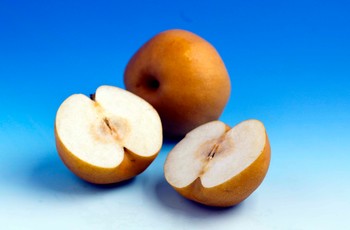
How to Plant Apple Seeds
Mastering how to plant apple seeds isn’t complicated and can be broken down into a few easy steps.
First, till the soil that you intend to plant in. Either choose the soil of your outdoor garden or the soil in your yard. Almost anywhere you decide to plant an apple tree is potentially suitable, with the right amount of care and fertilizer.
Remove any weeds or other invasive organisms from the area. Invasive pests harm your plant and prevent it from growing into a healthy tree by leeching its minerals and food or water supply.
Soil Enrichment
Add some soil enrichment to your desired planting spot. Soil enrichment options include commercial fertilizer, manure and compost. Give the soil the minerals and nutrients it needs to nurture and sustain life, by mixing the soil enrichment material in with the regular soil.
Dig a small hole and put your seeds in the hole. You won’t need to dig deep. Digging a few inches into the ground of the area you tilled and fertilized should do the trick. Cover the seeds with a mixture of soil and fertilizer and water lightly.
If you plant an apple tree sapling near your home, follow the preceding steps in the same way. The only difference between a sapling and a seed is that you need small root structure already. Dig a couple feet into the ground. rather than a couple of inches.
Upkeep of the your apple tree should be similar, regardless of its stage in the life cycle. Make sure your plant is getting about 1-2 inches of water per week. Too little water kills the plant, but too much water is just as bad.
Remember, one of the most important parts of learning how to plant apple seeds is to remember to keep the surrounding area devoid of weeds. Look for signs of pests or invasive creatures on your developing tree. If your plant has chewed leaves or marks on the trunk, you need a pest-killing product.
Find an natural alternative, to keep your potential tree alive and healthy. Depending on what you started with – seeds or sapling – you’ll grow a sizable tree in just a couple of seasons.
How to Grow Aloe Vera
Aloe vera is easy to learn how to grow in your own home or garden, and aloe vera is useful for more than one home use or remedy. Learning how to grow aloe vera can be a rewarding and educational pursuit, compared to purchasing plants and vegetables from the store.
Of course, Aloe vera plants are of higher quality and freshness than store bought plants and vegetables, but that’s just one of the reasons to grow your own aloe vera plants. Integrate your aloe vera growing into a family activity, to teach your children how plants grow and how to nurture and harvest life. Consider plant care and gardening as essential to your child’s appreciation of the cycle of life as owning their own pet. Sure, they won’t love aloe vera like they would a cuddly dog, but your kids can take pride in harvesting their own useful household goods.
In discussing how to grow aloe vera, we’ll go over frequently asked questions and general information. We’ll also cover the methods for growth, upkeep and harvesting of the plant.
Let’s begin with everything you need to know about getting your own basic aloe vera plant growth setup started, including the materials needed to do so. Once you’re familiar with these facts and you’ve obtained the requisite supplies, we’ll move on to methods for planting and growing aloe vera.
Once you’ve grown aloe vera plants, you’ll need tips and suggestions for harvesting aloe vera, as well as suggested uses and popular applications for aloe vera plants.
Preparing to Grow Aloe Vera
Aloe vera is a popular plant, thought to have originated in Northern Africa. It thrives in arid climates and produces budded, succulent leaves full of slimy gel. This inner gel, obtained by breaking the leaves, is medicinal in nature and popular in herbal medicine circles.
Why Grow Aloe Vera?
Many companies sell aloe leaf extract in liquid bottle form in drugstores, grocery stores and Wal-Marts across America. Aloe is good for soothing sunburns and other types of topical skin ailments, since the inner product provides a cool feeling to the touch.
While not a suitable substitute for sun block, aloe is effective as a minor medicine and is suggested by medical professionals.
Planting Aloe Vera
To plant aloe vera, you’ll need a few things. First, you need a place to plant your crop. An outdoor garden works well, though if you live in an inhospitable climate or are currently in a season not friendly to gardening, planting inside is also acceptable.
A plant holder or simple pot with room enough for soil works. Other useful tools or ingredients you need for growing aloe vera include the following:
- Aloe seeds
- Spade
- Soil
- Manure or soil enrichment products
- Watering can
How to Grow Aloe Vera
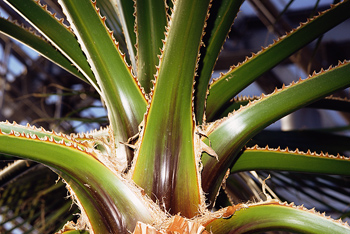
How to Grow Aloe Vera
The best climate for aloe vera is a dry and arid one. Aloe vera doesn’t require much watering, even though the fruitful leaves they bare are moist. This makes them a low-maintenance option for those looking to keep a timid house plant. Coupled with aloe’s medicinal benefits, this gives most homeowners a reason to keep aloe vera plants around in some form or another.
Watering Aloe Vera Plants
During the summer months, it’s best to water the aloe plant as soon as you notice that the soil is dry. An average size plant will take about 1 to 2 cups of water. Adjust this amount if your plant is larger or smaller than average.
In the winter, the aloe vera plant requires even less water, so you should let it dry out often, as aloe vera has evolved to maintain itself without water. Developed aloe vera plants are survivors of drought.
Growing Aloe Vera Plants
The planting and growing process is easy. First, establish the bottom of your soil system. You want the base to have 1 to 2 inches of gravel to allow for proper water drainage, a process that’s essential to the growth and prosperity of your plant.
Next, put in about 1 to 2 more inches of soil, followed by the seeds for the aloe plant. Cover the seeds with 2 to 3 more inches of soil, but not much more, since they tend to have shallow root systems. This method should work for both outdoor and indoor planting methods, but it should be noted that control over soil and gravel content/depth is much easier when you can manipulate the amounts of soil and gravel in a container.
Additionally, cacti-mix soil pre-packages tend to work well with aloe vera plants, since cactus and aloe vera tend to have similar properties and habits.
How Long Does It Take Aloe Vera to Grow?
Aloe vera plant grows within 2 to 3 weeks of initial planting, enough that you begin to see the growth. In the early stages of aloe vera plant growth, use your watering can to keep the soil moist, but be sure to be moderate. Over-watering or under-watering an aloe plant can be fatal to, or at least stunt, the progress of the plant.
After you begin to see the plant growing, wait a few more weeks and continue to care for the plant. After these few weeks pass, you should have some nice aloe vera leaves to harvest. Harvesting the aloe vera plant is as simple as using a pair of shears, or even your bare hands, to remove a leaf.
Aloe Vera Tips
Remember, over-pruning leads to plant decline. Aloe vera is a low-maintenance plant, so watering too much or pruning too much is a mistake new aloe vera growers make.
Also, a little aloe per leaf tends to go a long way in practical usage. So once you know how to grow aloe vera, a small amount of aloe should suffice for the entire family.
How to Grow Basil
Basil is a popular herb that’s purchased in small containers at your local grocery store. Many people grow their own basil either in their own outdoor gardens or inside their own homes. Learning how to grow basil is an easy way of breaking into gardening, since basil plants are less demanding than so many other crops.
Putting the time and effort into planting, growing, nurturing and harvesting your basil plant is a rewarding hobby. Home-grown basil is usually of higher quality and freshness than store-bought varieties. If you practice and refine your growth and harvesting methods, you might even start selling or giving away packages of your own homegrown basil.
Guide to Growing Basil
In this article, I’ll cover preparatory information essential to understanding what you need to know to grow basil. Later, the article supplies a short list of the materials and tools needed, in order to implement the planting and growth cycles.
The latter half of the article is devoted to describing in detail the steps necessary for planting, growing and harvesting your basil crop, as well as giving additional tips and important secondary information regarding basil farming.
Primary Basil Information
There are several varieties of basil. If you’re looking to grow the type of basil used in Italian food, for instance, you’ll want to purchase seeds for “sweet basil”.
Basil can be grown in most moderate climates and has a conventional growing cycle. Basil is known for having a strong pungent and sweet smell, so be warned if you are growing in close quarters.
Where Is Basil Native to?
Basil is actually believed to be originally a native of Asia, being transported to the Western world during the era of the spice roads and their exploration by westerners, such as Marco Polo. Originally, basil spices were used to help preserve food, after it had lost its taste and vitality, since refrigeration of any sort was rare and canning methods were nonexistent at the time.
Basil is simple to grow, since it’s not as large as many other plants. You can grow basil either in your home or your own personal outdoor garden. To be safe and prepared, though, you’ll need several basic tools and substances to get started on the project.
How Do I Grow Basil?
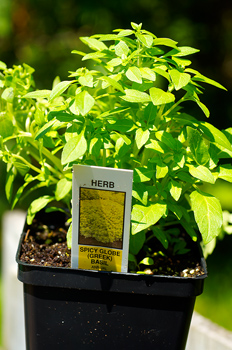
How to Grow Basil
To start growing basil, obtain a spade and watering can. These are basic tools for both the planting stages and growth stages of your basil project. You’ll also need other preliminary items.
- Soil
- Seeds
- Manure or soil enrichment product
- Pots or plant containers of some sort if you choose to do an indoor growth project
Growing Basil
Basil requires adequate drainage, when grown in pots. Make sure that the container or pot you use is lined with gravel to allow the soil to drain. Be sure that your soil has been well dug and tilled. Also, you’ll sufficient weeding of your garden area, if you are growing your basil outside.
The best time for growing basil in most temperate climates is around late March if outdoors and late February indoors.
Sowing the Seeds
Sow the seeds into the soil thinly, covering each with about ½ cm of soil enrichment product or manure. Water your basil plants with no more than ½ inch of water per week, distributed evenly.
Your seeds need to germinate approximately one week. Check after 5 days or so. Adding organic mulch around your outdoor plants can help reduce the chance of weeds forming and killing your plants. This also enriches the plant’s soil supply.
Harvesting Basil
You can harvest basil for its leaves. It’s best to pick some leaves off of several different plants, rather than pick all of the leaves off of one particular plant. This allows the leaves to grow back on each of the plants more evenly, while denuding a plant of too many of its light-catching leaves can kill it.
Basil is harvested for fresh use and dried applications. Using fresh basil involving no other activity than picking leaves off the plant. Drying basil involves either using a store bought dehydrating machine, or hanging your plants in an arid environment for a day or two to deprive them of moisture.
Basil Grow
Once you’ve mastered how to grow basil, you can take it a step further. If you want, start using your new basil plants to expand your operation into both outdoor and indoor plant types. As an important part of learning how to grow basil, you can use timed lights to grow basil year round.
Homegrown basil is helpful for people who cook a lot of their own food at home, or those who want plant-based gifts for their friends and families. Since the leaves from existing basil plants can be used to plant and grow new plants, growing basil is a self-sustaining type of home agriculture. Once you have your original seeds and potting, the only cost is water and fertilizer.
How to Grow Carrots
Carrots are one of the most popular root crops throughout the world. Many home garden grow carrots, because they are healthy and can be added to so many dishes. Add homegrown carrots to any number of meals, to make a nutritious side.
If you’ve seen the commercials, you know carrots are a great source of vitamin A. Learning how to grow carrots isn’t difficult, but it does require time and attention.
Growing Carrots – Selecting Soil for Carrots
Selecting the proper environment is essential, when learning how to grow carrots. Carrots grow in the spring, summer, fall and even winter, depending on the climate. Carrots can survive light frosts, which makes them a versatile crop and explains their widespread popularity.
Carrots are best grown in cooler weather, though. Carrot crops thrive in temperatures between 65 and 80 degrees Fahrenheit. Carrots grow in moderate shade, but perform best in sunlight. Choose a patch of soil that’s exposed to direct sunlight.
The best soil for carrots has a slightly acidic pH level. Somewhere between 5.5 and 6.5 works best. Home pH testing kits are inexpensive and easy to use, so purchase your own ph testing kit.
Preparing the Soil for Carrots
Prepare the soil bed by adding compost to the soil three or four weeks prior to planting. Keep in mind that carrot seeds only keep for three or four years before going bad.
Turn up the top 12 inches of topsoil. Remove any rocks, roots or twigs that you find, though your garden should have few impediments, anyway. Removing these obstructions allows the roots room to grow.
Add organic matter prior to planting, so the soil retains water, especially if the soil tends to be sandy. Adding organic matter also lightens the soil’s composition, if it’s heavy.
Germination takes place underground. If you want to speed up the germination process, soak the seeds in water for six hours prior to planting.
Planting the Carrots
Sow the carrot seeds about one third of an inch beneath the soil. This is important, since pushing the seeds deeper makes it difficult for them to reach the top of the soil after germinating. Consider planting the seeds a bit closer to the surface, so that the sunlight can reach them, if the weather is unseasonably cold.
Another option is to place two or three seeds in each hole, noting that holes should be between 18 and 24 inches apart. Try planting one seed per hole, with holes spaced about three inches apart. Either way, put at least eight inches between each row of carrots.
Different varieties of carrots may require different treatments, so check the seed packet for any unique specifications.
Tending to Carrots
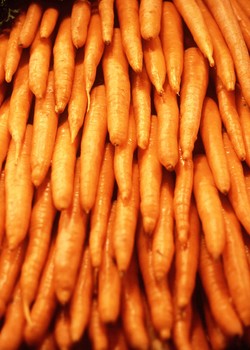
How to Grow Carrots
Carrot seeds require some amount of maintenance to ensure they grow. Keep the soil moist. Carrots grown in moist soil tend to be sweeter.
Every few days, give your carrots a good amount of water in the morning. About a half inch of water at a time is appropriate for young carrots. Monitor the carrots to ensure that they don’t receive too much water via rainfall.
Reduce the carrot’s water consumption so they don’t grow too quickly when they begin to reach full maturity.
Carrots and Fertilizer
When selecting a fertilizer, keep in mind that carrots are better off in the company of organic fertilizers. Simple compost might be enough, but Mycor root-building fertilizer can help carrots retain water and grow well.
Avoid weed killers, as they are likely to kill the carrots along with any weeds.
Thin out the carrot tops, so they don’t become entangled. Maintain the area by removing weeds and adding compost, as needed. Carrots should spend 10 weeks underground from planting until harvest. Harvest carrots early if you desire them to be tender.
Carrot Growing Tips
Sprinkle wood ashes throughout the area to enrich the soil’s supply of potassium, which is essential for carrots.
Do not add fertilizers that contain high amounts of nitrogen (i.e. manure), as these fertilizers tend to cause carrots to grow unevenly. Carrots should have one root, but the addition of nitrogen-rich fertilizers can cause them to sprout several roots.
Make sure all roots stay covered with soil, which keeps the carrots orange and sweet tasting.
Carrots are not easy to transplant. Once the roots take hold, they are difficult to move.
Carrots are vulnerable to a number of pests and diseases. Some of the more common ones are:
- Armyworms
- Carrot Root Flies
- Flea Beetles
- Leafhoppers
- Parsleyworms
- Tarnished Plant Bugs
- Thrips
- Vegetable Leafminers
- Wireworms
- Yellow Woolybears
- Aster Yellows
- Black Root Rot
- Damping-off
- Leaf Blight
- Leaf Spot
- Powdery Mildew
- Root Knot Nematode
Carrot Gardens
Growing carrots can be done with relative ease, but knowing the intricacies involved in the process can make carrot growing easier. Follow these tips and you can be enjoying homegrown carrots in as few as 10 weeks.
For more details about growing carrots, check out:
How to Grow Celery
Celery might seem like a simple vegetable to learn how to grow it, but you’ll find that celery is easy to start growing, but difficult to maintain. Celery is a water-based vegetable, so it’s easy for celery plants to dry out and die.
Also, planters have to be careful where they plant celery, because too much sunlight will kills celery stalks, while too little light retards the growth.
Celery and Frost
If there is the threat of frost, celery needs to be covered at night. If celery is hit by frost over night, the harvest is ruined. So celery is a high maintenance crop.
Another reason celery is a headache to maintain is it’s “lightness”. Still, learning how to grow celery can be rewarding, due to the dedication that is required. Once you know how to grow celery and foster good gardening habits, you’ll find that tending to celery becomes second nature.
Celery Season
Celery is considered a cool weather crop. The plant takes about 16 weeks to mature, before it’s ready to be picked. Celery prefers compost and moisture-rich soil in order to grow and has a low tolerance for heat, as it prefers cool and cloudy areas. You don’t want to plant celery in an area where it won’t have sufficient cool weather to grow, preferably 3 to 4 months.
Getting Started Growing Celery
Because celery is a cool weather crop, it is best to start growing celery indoors. Otherwise, if you wait until the end of spring, it will be too warm to grow outside. When you start to grow celery indoors, let the plant grow for about 8 to 10 weeks before placing it outside.
Only plant celery outside when the threat of frost overnight goes away. If it’s too hot or cold, the celery plant‘s growth is inhibited. Anything lower than 50 degrees and above 70 degrees is bad for the plant, so you can see the climate has to be just right.
Planting Celery Indoors
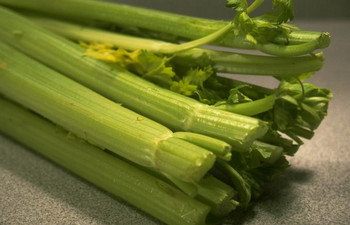
How to Grow Celery
When learning about planting celery indoors, you will want as few seeds per pot as possible. The seeds are small enough so that this should not be an issue. Plant up to 10 in the same pot, but no more.
When the seeds start to sprout, remove them from the pot one by one, until you have 1 germinating celery seed per pot. When the celery reaches about 6 inches tall, it is ready to plant outside as long as there are no frost dangers.
Remember to water the celery on a regular basis. Otherwise, the celery stalks become tough and stringy.
Caring for Celery
Once you’re ready plant the celery outside, make sure that it’s planted in a good spot for growing. Too much sunlight without water will dry them out and kill them.
Water your celery crop every day and make sure the plants are in moisture rich soil. When you plant them outside, space the plants about 2 feet apart from each other in rows. It bears repeating that celery needs to be in full sunlight when planted outside, for optimal growth to occur.
Because celery is a heavy feeder, it also needs a great deal of nutrients, such as compost or fertilizer. When you till and weed the soil every day, it is a good idea to till compost into the soil so that the nutrients can be mixed with the moisture and absorbed by the water.
Be careful of the kind of fertilizer you use, because some of the artificial fertilizers can cause the plant harm. If you are going to use fertilizers, try to use organic ones. These fertilizers tend to be a little bit more expensive, but they are far safer and better for the body.
Harvesting Celery
Celery has a long maturity rate for a vegetable and before it matures completely, you will need to tie the stalks together with twine, so they don’t grow improperly or wilt.
Before harvesting, there are also a great deal of insects and diseases that can harm celery such as slugs, aphids, leaf spots and blight. Once celery has reached a height of a foot or more, it is ready to be harvested. When you harvest celery, cut the outer stalks away, because they were the ones most exposed to the elements and the inner stalks will taste better.
You can you use the outer stalks of celery in soups or stews, so if they are undamaged, don’t throw them away too soon. While celery requires a lot of care, the finished vegetable is useful in so many dishes, or as a side dish. Learning how to grow celery means you’ll always have your own supply of fresh celery.
For more instructions on how to grow celery, visit:
How to Grow Corn
Corn is one of the staple crops in the world, making the knowledge of how to grow corn valuable. Even before the first European settlers came to America, natives were planting and harvesting maize, a vegetable similar to corn. Learning how to grow corn can be an interesting way to gain insight into the early ways of living in America.
Also, growing corn gives you the opportunity to obtain fresh and high quality crops, outside lower-gauge grocery store varieties of corn. Learning how to grow corn can also be considered a good hobby and the nature of corn growth lends itself to intermediate gardeners and agriculture enthusiasts.
Recently, the development of corn as a potential fuel source has begun to make it even more interesting to many planters around the country. The process of using corn as fuel is complicated and expensive when considered on the small grower level, but you can assume that the science of turning corn into fuel should progress, making corn-for-fuel more viable and inexpensive in the future.
The amount of corn that you grow in your garden or backyard won’t be enough to act as a fuel source replacement to fuels like gasoline, at least in the foreseeable future. But if the price of corn increases to account for its use as a fuel commodity, growing even a small amount of corn for consumption should be worth your time, when putting food on the kitchen table.
Preliminary Corn Concerns
Corn is the common name for any of the cereal plants like maize, wheat and barley. Corn products have many applications and usages beyond being eaten as a food, but people love to eat corn, on the cob or off.
Corn as a Product
Corn is the most widely grown crop in America today, even above the popular tobacco. There have been many varieties and offshoots of corn species over the centuries, though many breeds have begun to homogenize into crossbreeds and more conventional types. Despite that, minor corn varieties like the smaller sweet corn plant remain a popular choice for growers around the world.
Learning how to grow corn is not hard, though you’ll need to obtain certain important tools and materials in order to insure success in your project. It is best to grow larger crops like corn in some sort of outdoor garden, especially since corn survives in most temperate to moderate climates.
However, it’s not impossible to plant corn inside of your home, especially if you have a greenhouse or even a basement with some sort of lighting and irrigation system. You’ll need to get a spade, soil, watering can, pots, plant containers and manure or soil enrichment product.
Corn Growing
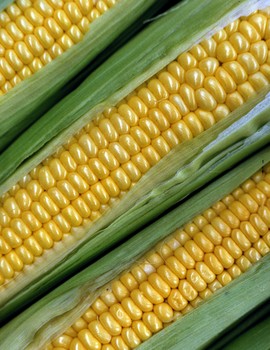
How to Grow Corn
Corn is best grown outdoors, as the crop is larger than most conventional houseplants which yield fruit or buds. Corn requires rich soil, good drainage and a moisture-retentive base. This contrasts with many plants we’ve covered, like the common herb, aloe vera, which requires almost the exact opposite base.
As with many other plants, if you buy seeds, expect to wait a while (5-8 weeks) after purchase and planting to see any growth progress or development. If you have a shorter window of time with which to grow, you can use developed corn plants as your seed.
Planting Corn
Mix your soil base to a ratio of about ½ soil and ½ soil enhancement product or fertilizer. Till the base moderately with your spade.
Sow the seeds about an inch or ½ inch deep, about 3 to 4 inches apart from each other. It’s not a bad practice to put several plants together in pods, because this will ensure that at least one plant will come to fruition, if the others fail to take. As the plants grow, be sure to give them at least one inch of water a week, but administer the water horizontally in flow.
If you water corn from above, you are likely to wash away valuable pollens. You can simply use your watering can, flipped over on its side and close to the soil, instead of the conventional way of pouring water from above at a distance.
The corn plants develop over 3 to 4 weeks. Trim the stalks and keep them about 6” to 12” apart during the growth phase. When the plants reach 10”, nurture them with another mixture of soil and soil enhancement or fertilizer.
Repeat this process when the plant reaches both 18” and as the tassels of the plant appear. Corn is ready to harvest when the husks reach a dark green color. The silks of the plant should be dry and brown, and the kernels should visibly reach the top of the ear of corn.
This will occur about twenty days after silks appear on the plant. For expedited growth, be sure to keep parts of old plants after you harvest. Use these, as you don’t want to have to start from seeds the next time you want to plant some corn crops. Using the plant, instead of a seed, saves a lot of time and preparation when growing corn.
How to Grow Cucumbers
Cucumbers are a versatile vegetable, with many uses ranging from health care to consumption. Consuming cucumbers contain useful vitamins like potassium and magnesium.
Cucumbers can be pickled or eaten raw, and pickled cucumbers are so popular in North America, they are referred to by the generic term “pickles”. Learning how to grow cucumbers can give you access to a steady supply of this vegetable without trips to the grocery store.
Before discussing different growing techniques for cucumbers, here’s a few fast facts to know about cucumbers.
Cucumber Factoids
The first cucumber originated in one of the most humid areas of the world: India. Cucumbers require a lot of warmth and sun when growing.
Among the health advantages of cucumbers are as an aid in digestion, better skin texture and hair health.
The cucumber plant has male and female flowers, but only the female flowers grow the cucumber.
Cucumbers are such versatile and useful vegetables, that many cultivators have begun to combine different kinds to make new versions through cross-pollination. Cucumbers are easy to grow and are a vine vegetable related to squash and melons.
Because cucumbers are a vine vegetable, they require a great deal of space. It is a good idea to leave a large plot just for them, if you plan on planting them.
Planting Cucumbers
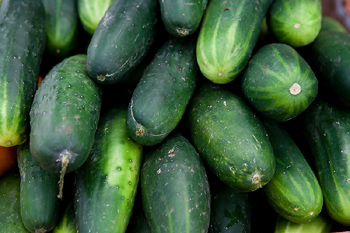
How to Grow Cucumbers
When learning how to grow cucumbers, choose a planting spot that is exposed to sunlight during the entire day. However, if you live in a dry and arid place, you want to place the cumcumbers where they can get some shade. Otherwise, the plants will dry out.
It’s also a good idea to plant cucumber seeds along with a lot of compost. Compost can help enrich the soil, making the plant grow to larger and healthier. When digging to plant the seeds, make sure to create a deep hole.
The best time to plant them is after the threat of frost is gone and when the soil warms, so it’s best to plant cucumbers in early spring or summer.
Once you plant your cucumber seeds, it takes 3 to 10 days before you see anything sprout. The higher the temperature when cucumbers are planted, the faster the flower will grow, because of their arid preference.
When planting cucumbers, it’s important to take notice of what kind you have. If you have a bush variety, these need to be spaced out at 18 inches. If you have a vine variety, you need to leave about 3 feet of space between each cucumber seed planted.
When learning how to grow cucumbers the organic way, you can start them off inside. Plant the cucumbers in starter pots and let them grow in an indoor greenhouse for about 2 weeks, before transplanting them outside.
Caring for Your Cucumber
Just like any other plant, cucumbers can catch diseases. Pests eat the plant before it has time to fully develop, damaging your harvest. Some of the more common pests for cucumbers are aphids and the cucumber beetle.
Also, watch out for powdery mildew and bacterial wilt. Use pesticides to keep insects off of your cucumbers, but use caution because pesticides can harm bees that pollinate them whereas natural pesticides do not. Fish emulsion is a good fertilizer, because it’s all-natural and you can spray your cucumber plants with it after about 4 weeks.
Once the plant has started growing, you’ll want to till the soil once a day to keep weeds out and keep moisture in. Once the cucumber plants start to flower, it’s important that you provide them with 1 inch of water each week. When tilling the soil, make sure not to dig too deep.
Harvesting Your Cucumbers
Cucumbers are ready for harvest when they’re a quite large. You can tell when cucumbers are ready to be harvested, because they become dark green and soft when squeezed.
If the cucumber is yellow, it’s too ripe and it won’t taste good. Ripe cucumbers have a bitter flavor. Cucumbers are usually ready for harvesting 60 days after planting, but the time varies between varieties of cucumbers.
Some cucumbers mature faster. but the process is the same when trying to figure out if they are ripe.
More Cucumber Tips
Be careful when growing cucumbers, because the larger they become, the more likely they are to lose their flavor. When you cut the cucumbers off the vine, cut them about an inch above the cucumber.
Growing your own cucumbers lets you eat them in a solid or on the side, or learn how to pickle cucumbers and have your own ready supply of homemade pickles and pickle slices.
How to Grow Flowers
Learning how to grow flowers in a bed or a garden is a popular for many people, because a nice flower garden adds to the beauty of your yard. Many people try to grow as many different flowers in their gardens as they can, though amateur florists need to be careful their non-native flowers aren’t the kind that can take over native flower populations.
There are different types of flowers available for planting, but all of them require unique care. Remember that the more types of flowers you grow, the more you’ll need to know about flower gardening. Some flowers require more water and sunlight while others require less, so start with a handful of flower selections and grow your garden from there.
Popular Flowers Species
A couple of good flower species to start your garden with are irises and poppies. Both irises and poppies add beauty to your landscaping, which is another reason they’re popular. Both plants love sunlight, but poppies require far less water to grow than irises.
Whether you have a small flower bed or a garden, all flowers need proper care and nurturing, but start with a couple that need a little less nurturing to give you a pretty landscape.
Getting Started Growing Flowers
Before you learn about growing flowers in a garden, first learn what a flowers needs as far as care goes. If you take a seed that needs little water and can be planted in light soil, but grow the seed in dark soil with a lot of water, the seed won’t sprout. The seed won’t be able to absorb the excess water, so it’s stays wet and eventually rots in the ground.
Make sure to always read the instructions on any package of seeds, to find out the exact planting conditions. Some flowers don’t need a lot of water, while others do. There are some plants that don’t need a great deal of sunlight, while other flowers need constant sunlight.
For each new flower type you plant, you’ll need to learn about soil depth, which is how deep seeds should be planted. Most seeds should be put in holes as deep as your thumb, which is why you’ll see a lot of gardeners poking holes in the soil with their thumbs. Some flowers have big bulbs and therefore are going to need a far bigger hole to be planted in.
Sunflower Seeds
The sunflower seed is a unique seed, because you can put the seed in a hole or just toss it on the ground, and it will flourish and grow just fine. As the name implies, sunflowers are one of the flowers that need constant light, though.
Caring for Flowers
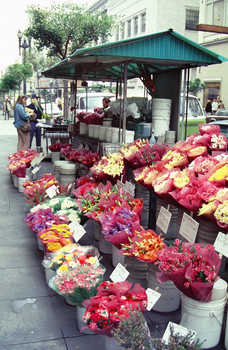
How to Grow Flowers
Once flowers start blooming, most florists get a sprinkler that’s covers the entire garden. When caring for flowers, it’s important to know how often they need to be watered. If you decide to use a sprinkler for your garden and you have a flower that doesn’t need water that often, you run the risk of drowning it.
It is far safer to use a watering can or walk around with a hose that has a spray nozzle, because you give the plants the proper amount of watering, without the risk of hurting others.
If one end of your garden gets more sunlight than the other, you’ll want to plant flowers that require a great deal of sunlight on the sunny end. If you are able to find a suitable location for your garden where you can put all different types of plants, your plants will benefit greatly. Once the seeds start to sprout, it’s important to keep an eye on the seeds, to make sure they are doing well in the conditions which you planted them.
Weeding a Garden
Eliminate weeds in the garden before planting any flowers. Weeds choke out flowers and take over a garden, if they aren’t regulated. Be careful when you use weed killers, because if you miss and spray your flower, your flower will die.
When weeding your garden, it’s far safer to pull the weeds by hand, than to use a pesticide.
Enjoying Your Garden
If you make sure that your flowers are planted properly, by giving your flowers the right sunlight and the right amount of water, your garden should be delightful and colorful when in full bloom. By choosing the right flowers, you’ll be able to enjoy a full summer’s worth of blooming flowers, because some flowers take longer to bloom than others.
When considering how to grow flowers in the future, remember to read what type of conditions flowers need and be sure to water them and give them proper care. Once you have mastered how to grow flowers of a certain type, learn how to grow other species of flowers. Add a new type of flower to your garden every year and the beauty of your garden should grow with your skills as a florist.
How to Grow Mushrooms
Growing mushrooms is a common hobby for amateur agriculturalists and mycologists alike. Mushrooms are unique among other garden “plants”, since they are fungi and not in the plant family. According to a consensus of scientists, mushrooms are more closely related to animals than plants, though the mushroom we eat is the fruit of a fungus, much like an apple is the fruit of an apple tree.
Learning how to grow mushrooms lets you grow your own supply to be harvested and eaten at the dinner table. Also, learning how to grow mushrooms let’s you consume fresher than store-bought mushrooms, which you don’t have to hunt for in the wild. Getting wild mushrooms is time consuming and won’t yield the amount of mushrooms you need to cook your dish of choice.
So plant mushrooms next to your fruits and vegetables and have a steady supply of shrooms in your backyard or, more likely, your basement or cellar.
Which Mushrooms Dangerous to Eat?
Another reason people learn how to grow mushrooms or buy them at the store is that it’s dangerous to gather them from the wild. There are a variety of mushrooms that grow naturally in the wild, but many of them are poisonous. Most professionals recommend that only a seasoned expert attempt to gather their own mushrooms in the wild.
Even with the help of a guide book, mistakes can happen. Illustrations might not conform to the exact details of a particular mushroom growing in the wild, so a visual mistake can be made by the untrained eye. While some inedible mushrooms might just make you sick, other mushrooms are poisonous enough to kill a person who eats them – sometimes within minutes of consumption.
Mushroom FAQ’s
Many mushroom growers grow their mushrooms indoors, instead of in a garden outside. That’s because mushrooms are fungi that thrive in damp, humid and dark environments. The three most common types of mushrooms purchased for home growth are shiitake mushrooms, oyster mushrooms and white button mushrooms.
Even among the fungus kingdom, different mushrooms thrive in different environments. Hard wood or hard wood sawdust is best when growing shiitake mushrooms, while oyster mushrooms require straw. White button mushrooms are best grown on composted manure.
Buying Mushroom Spores
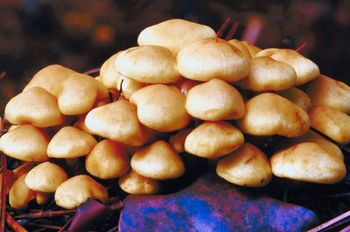
How to Grow Mushrooms
When you decide which mushroom type you want to grow, you need to seek out the purchase of spores from a reputable dealer. Many people purchase their mushroom spores online. However, if you live near a greenhouse or agricultural outlet, you can also buy them in person.
Although the base soil on which fungi grow and the spores are different from each other, the basic method for mushroom growth is standard throughout all the species of mushrooms. You want to find a cool, damp and dark area somewhere in or around your home to grow mushrooms.
Basements are prime real estate for fungi fruition, but you can also use an empty closet or cabinet, as long as you have a way of keeping the environment within hospitable for your crop. You can do this by purchasing a humidifier. Depending on the company, you should be able to obtain a humidifier that meets the size and space requirements of your growing area.
Growth and Humidity Concerns
Along with darkness and moisture, you need a source of heat to grow mushrooms. Your best bet is an oven or hotplate. Raise the temperate of your growth base to 70F, after placing it into the bed of a pan. Wait 3 weeks and the spores should root their filaments into the growing medium.
Once this happens, reduce the temperature to around 60F or 55F. Cover the rooted spores with about an inch of soil. Cover the soil and pan with a damp cloth and keep the cloth wet by spraying it as it begins to dry.
Prevent Dryness
Lift the cloth and spritz the soil to prevent it from becoming too dry for mushroom growth. Mushroom blooming occurs in about 3 or 4 weeks. Wait to harvest the mushrooms until the cap or top part has completely bloomed, so that it separates from the stem or base.
When this occurs, you’re ready to pick the mushrooms, though you have the option to pick them after they grow larger, by nurturing the mushrooms longer.
After you harvest your first homegrown batch of mushrooms, you can experiment by expanding your operation and growing different varieties of mushrooms. Use separate pans if you plan on growing simultaneous different species of mushrooms, as mixing growth bases can ruin the fruitful harvest.
If you are fortunate to have a damp and dark basement, invest in the equipment to start a more large-scale operation than afforded by a simple closet or cupboard. If you are ambitious enough, you can start several pans growing at once and cycle them to be harvested constantly, by staggering the initial planting and harvesting times. This way, you can have a constant stream of mushrooms to harvest and even sell to your friends.
When you have so many mushrooms to go around, looking for new and exciting mushroom recipes is the next step. There are a million great mushroom recipes you’ll want to try, now that you know how to grow mushrooms.
How to Grow Garlic
Growing garlic at home can be a fun and rewarding activity, while making your home dining experience more rewarding, too. Many people prefer to grow their vegetables at home, because they prefer the better freshness and taste of their homegrown foods. Learning how to grow their own vegetables therefore becomes enticing, and learning how to grow garlic is right at the top of the list.
The different in quality between store-bought and homegrown garlic might be debatable. Some people no doubt imagine a major quality difference, because they want to believe that the hard work they put into the growth, nurturing and harvest of their own plant led to some success. These planters want to see their time was well-invested and worthwhile.
Regardless, people might grow garlic as a hobby or in order to sustain themselves in an agrarian manner, but knowing how to grow your own plants has many advantages. For one, you know exactly what process went into the growth of your own produce, so you can be certain you went organic or there were no pesticides on your food.
Besides, in today’s fast paced, commercialized society, it’s nice to have the satisfaction of producing something with your own hands and (moderately) hard work. Growing your own vegetables put you closer to the soil or closer to the earth, however you want to state it. There’s really no plant more earthy than garlic.
Garlic Information
Garlic is a cloven plant. For Americans, we think of garlic being used in foods of Italian origin. But garlic is used to spice up a variety of dishes from different nationalities.
The versatility of garlic causes many people to harvest their own garlic, because it’s needed in a great deal of their cooking. To spice up your menu, play around with garlic recipes. Grow your own garlic and you’ll have a ready supply for your culinary experiments.
Garlic Cloves
Garlic is hearty. Each garlic clove contains the material within itself to create more garlic plants. This makes garlic growing self-sustainable. If you have an existing clove of garlic, you plant it and grow an entire new vine of garlic bulbs.
You can then take several cloves off of the new garlic vine and plant them separately, creating a chain reaction of garlic plant growths. Depending on your ambition and resources, you start a small-time garlic growing operation by selling bulbs and cloves to your friends for a profit, teaching each one how to grow garlic.
Garlic Growing Supplies
This list of items you’ll need for growing garlic is short and simple. You’ll need soil, garlic cloves, and a watering can of some sort. You can grow garlic in a large pot or pan, or move it outside into a garden, if you’re growing several vegetables or a lot of garlic.
Once you have gathered your materials, you’re ready to begin the process of learning how to grow your future fruitful harvest, so let’s start.
Garlic Planting
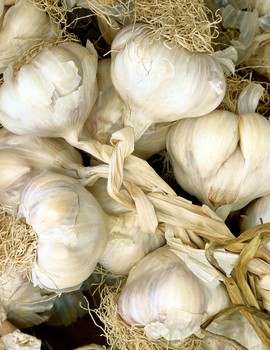
How to Grow Garlic
Decide your basis for growing your garlic plants. Find a modestly-sized area to garden outdoors. Some people, however, grow garlic indoors. Either way is fine and the methods for doing so do not diverge very much. The only notable difference is that inside of a building, the temperature, sunlight and humidity are easily controlled.
However, this method require your regular attention and isn’t for those that do not have time to consistently care for their garlic. Your garlic plants will need a healthy amount of sun, which can be a problem, if you don’t move them to a window. Also, indoor garlic growing can cause pungent smells in your home, because garlic has a distinct smell.
Planting Garlic with Other Plants
Garlic makes a good neighbor, though. If planting with other crops, you needn’t worry about your garlic interfering with the diverse plants. Garlic is a friendly plant and most likely won’t kill your other vegetables.
Garlic can even protect neighboring plants from diseases, though it has diseases of its own to which it is susceptible.
Tips for Growing Garlic
The following tips for growing garlic should guide you the rest of the way.
Once you are prepared to plant your garlic cloves, you can do so by finding a plot of soil in your garden or container. What you’re looking for is a space where you can bury the cloves about 1 inch below the soil. You also want to put the garlic cloves about 4 inches apart from each other, in order to insure maximum growth space and easy organization/differentiation from each individual plant for harvesting.
If you are planting multiple rows of garlic, you should plant each row about 18 inches apart from each other. Planters suggest that the shortest day of the year (December 21 or Winter Solstice) is the best day to plant garlic, though no one knows for sure whether or not this is for practical agricultural or scientific reasons. This might be a convention handed down from generation to generation.
An interesting experiment would be to plant garlic both on the shortest day of the year and otherwise and compare the growth and quality of the different plants.
When a garlic plant is mature, the leaves begin to brown, die and shed. When you see this start to happen, harvest your garlic crop. If you harvest too late, the bulbs will be split or malformed.
If you harvest too early, the cloves themselves will be small and poor in quality. Hang the bulbs in a cool dry place to dry out the cloves for use.
This last step is important, as all of your hard work and planning nurturing the plants can go to waste, if you’re not cautious. After a week, your garlic bulbs should be ready to be de-cloved and eaten.
How to Grow Herbs
Learning how to grow herbs is useful in a variety of ways: as spices, flavoring or in home remedy usages. Many people buy their herbs from a grocery store or local market, though others choose to grow their own herbs in their backyard or even inside their houses. Growing herbs isn’t difficult, if you take the time to read a little bit about how to grow herbs at home.
Growing Herbs at Home
Growing herbs at home is a great way to spruce up your house with some organic life, which has benefits you might not be aware of. According to NASA, indoor plants not only take carbon dioxide out of the air in your home, but plants may absorb benzene, formaldehyde and trichloroethylene. While herbs and other plants won’t take all the pollutants out of your house, it’s logical to assume plants clean up the air in your home.
Combine that with all the other uses herbs have in your life and you have some very compelling reasons for growing herbs at home. Herbs come in many varieties of species and make great personalized gifts for your friends and family.
Some of the more rare herbs are expensive when purchased from a grocery or specialty store. By learning how to grow herbs yourself, you can save money, especially if you’re interested in making your own tinctures or spices at home. Although growing herbs costs money for seeds and time for growing, that’s a startup cost and you’ll continue to grow some herbs year after year, without making an additional investment.
Getting Started With Herbs
When learning how to grow herbs, it’s important to familiarize yourself with the many different herb varieties, before delving into strategies for growth. Since herbs are plants, many herbs follow the same growth cycles and planting tips as other planting topics we’ve discussed.
Some herbs are grown for consumption in dishes, such as basil or oregano. Other herbs, like aloe vera, have little or no culinary use, but are cherished for their herbal medicinal properties. Aloe vera plant, for instance, gives respite from a variety of ailments, such as sore muscles or sun burns.
A simple set of required tools is all you need to begin your planting project. Depending on the season and the climate you live in, grow herbs outside in your garden or indoors in pots or plant containers. Either way, the following items are indispensable in most cases.
- Spade
- Watering can
- Pot or container for plants
- Fertile Soil
- Soil enrichment product or manure
- Seeds
Growing Your Herbs
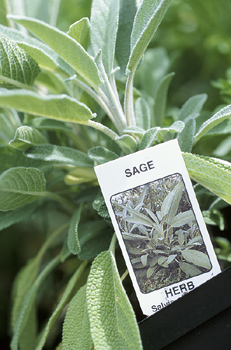
How to Grow Herbs
You want an environment to grow your herbs that consistently receives at least half a full day’s worth of sunshine. Organizing your herbs by categories is helpful. For instance, grouping perennials with other perennials and annuals with other annuals helps your garden be more consistent and organized.
Also, grouping edible herbs with other edible herbs and medicinal herbs together is a wise idea, for the sake of cleanliness. That way, you know exactly where your edible herbs are at.
Planting Herbs
Nurturing existing herb samples speeds the growth process, instead of starting simply from seeds. You need an existing herb to do this, so unless you have a friend who grows herbs, you’ll need to go to a nursery. If you have a nearby plant nursery, you should be able to find all the basic herbs to plant.
More exotic herbs are harder to find in your area or may be too expensive for your budget, but you should start out simple, anyway. Remember, seeds work perfectly fine, but you’ll have to wait longer to see results.
Organizing Your Herbs
Keep your patches of different herbs organized according to like-species. Surrounding some plants with a border of chives and parsley, for instance, distracts bugs where large patches of one herb might otherwise be devastated quickly.
Most herbs require a rich soil mixture. Try a ratio of ½ soil and ½ soil enhancement product for your initial base.
Don’t bury seeds or plant parts for most herbs too deep. 2” to 3” underneath the soil should suffice for many species. Whether or not you’re planting outside in a personal garden or inside in containers, soil choice makes a large difference in the success, growth development and interaction of your herbs.
That’s especially true if you’re growing a mixture of different herbs together, since some herbs fair better outside during certain times of the year, while others don’t. Some herbs need more sunlight than others. Generally, though, herbs tend to share requirements within the same ballpark.
Play around with the lighting and soil and see which herbs work best under which conditions. Don’t be afraid to move an herb to better light or richer soil, if it isn’t doing well.
Master the Basics – Learn the Specific Later
Additional research on the individual herbs you are interested in planting wouldn’t hurt, once you start to grow your own herbs. Once you become more familiar with the growing process, the species in your garden and the overall herbal lingo, cross-reference requirements for each species.
Also remember that many edible herbs need to be pinched regularly for cooking purposes, because this enhances the flavor concentration and intensity. Make sure to supply at least an inch of water to the herbs every week. Keep in mind, however, that the dryer you’re able to keep most herbs, the better tasting they are going to be.
Depending on your mix of species, you might get away with less than an inch of water, though experience and experimentation is best to help you figure out the right requirements, when you’re learning how to grow herbs.
How to Plant Hibiscus
Hibiscus is a striking and varied type of flower that many florists want in their garden. For this reason, learning how to plant hibiscus plants is something most gardeners want to learn, because hibiscus is an enjoyable addition to any garden. You can plant hibiscus flowers either indoors or outdoors, but the outdoor variety is what I suggest, since hibiscus attracts bees and butterflies, and therefore adds a lot of life to your garden.
Why Plant Hibiscus?
Hibiscus’s flowering parts add a great visual element to your plant display, while hibiscus has other advantages, as well. Hibiscus is used to make hibiscus tea, which can be much more enjoyable if made at home fresh. Usually, this homemade tea is of higher quality than store bought hibiscus tea bags, which tend to travel far and may not always be fresh.
Hibiscus is the key ingredient in another famous drink, sorrel, which is produced throughout the Caribbean. Also, the fibers of hibiscus plants are often used to make grass skirts in many cultures.
Getting Started With Hibiscus
There are several initial concerns regarding the planting hibiscus. Decide whether to plant from seeds or buy sprout plant samples. If you use sprouts, you don’t have to wait through the germination period to see your plants. You have more control and involvement with seeds.
Also, decide the place you’re going to plant your flowers. As I mentioned before, you can grow hibiscus indoors or outdoors, depending on your climate. Take into consideration the growing season in your area, along with the time of year you choose to grow your hibiscus.
When considering the climate, take into consideration rainfall, temperature and precipitation. You can control these factors more by growing your hibiscus inside, though this requires more care, attention and resources.
If you plant hibiscus indoors, purchase timed lights, a watering system and many plant holders and pots. You need a few basic elements to get started, regardless of whether you plant inside or outside.
- Fertile Soil
- Plant Holder/Pots
- Spade
- Watering Can
- Seeds/Sprout
- Fertilizer
Preparing the Soil
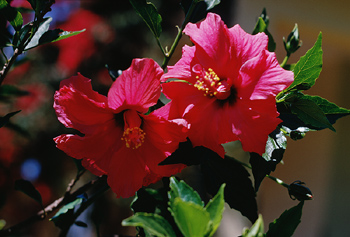
How to Plant Hibiscus
Learning how to plant hibiscus isn’t involved or demanding and the steps taken are roughly the same as others seeds you’ve planted. Decide whether to plant inside your home or outside in a garden.
Till the soil and remove any weeds or other organisms harmful to hibiscus, if you plant outdoors. Add fertilizer or some other alternative soil enrichment product such as manure or compost to the soil, after tilling. Dig a hole and plant your hibiscus.
Planting Hibiscus
If you use a seed, plant them 2-3 inches underground. If you have an existing plant sprout, you need something closer to 6-8 inches below the ground. Once you plant, cover the plant or seed with a mixture of soil and soil-enrichment products.
Water the mound that you covered.
Your plant should germinate and sprout into a mature, budding and flowering plant over the first couple of weeks. Maintenance of hibiscus isn’t demanding. Make sure the plant is receiving a full day’s worth of sunshine during the prime growing season and about 1 inch of water per week to survive on.
Be on the lookout for weeds or flower-eating pests, if you’re planting your hibiscus outside in your garden. Make sure your hibiscus is placed in a prime spot for sunlight, or that you have sufficient sun-replacement lights timed to provide the right amount of UV rays required for proper growth.
Harvesting your flowers is simple. Pick the flowers off the plant gently with your hands, after they have bloomed. Grow multiple hibiscus plants, so you can take a couple flowers from each plant, instead of all the flowers from one plant.
This keeps your existing plants looking healthy and attractive and won’t kill them by overharvesting their flowers. Now that you know how to plant hibiscus, your flower garden is going to be full of bright red, pink, purple or yellow colors – depending on your choice of hibiscus. My favorite is the good, old-fashioned white hibiscus, but that’s just my way.
How to Grow Plants
Learning how to grow plants is a hobby for many people, as well as a money-saving hobby. The idea of having your own garden and growing fruits and vegetables is fulfilling, because you nurture plants to put food on the dinner table, but gardening is also economical, because it’s cheaper to grow your own food.
One of the biggest problems with growing plants, though, is learning what each plant needs to grow properly. If you don’t know what you’re doing, you’ll end up killing the plant. People who have a hard time growing plants and gardening – the so-called brown thumbs – tend to forget some key step in the process.
Follow the steps below and you’ll have a firm base to become adept at growing plants, hopefully becoming a green thumb who knows how to grow plants with the best of them.
Learning to Grow Plants
When learning how to grow plants, remember that no matter where the plant is from, it requires basic needs like any other living thing. The most basic needs for a plant are water and sunlight.
A common mistake of beginning gardeners is not giving their plants enough sun or water. Some plant species require less of one or the other, while other species of plant require much more. Being a green thumb is knowing the difference in how to grow different plants, instead of giving all the plants in your garden the same treatment.
This is an extreme case, but to illustrate the point, plants such as cacti need less water than most plants, but they love to be in the sunlight; otherwise, they turn yellow. You can’t treat a cactus the way you would treat a zucchini.
Planting Seeds
When planting flowers, vegetables or fruits, it’s important you find out the proper conditions for the plants. If you plant a flower that needs a lot of sunlight, it’s a big mistake to put that plant in an area where there is little to no sunlight, for example. Not only will the plant not grow properly, but it might even die.
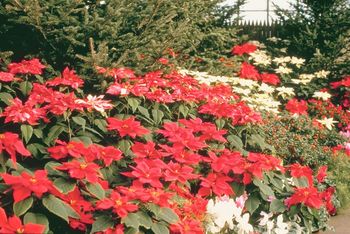
How to Grow Plants
Examples of flowers that need a lot of sunlight are asters, poppies and hollyhocks. On the other end of the spectrum are the flowers that thrive on a great deal of shade, such as lady’s mantle, crested iris and violet. Put any of these plants in the wrong environment and they won’t prosper.
Also take into account when planting is seed depth. Certain plants require being buried in deep holes, while others need only be placed on the soil to grow properly. Regardless of how deep the seed needs to be, it’s important that they get water.
Without water, the seeds won’t sprout and start growing. Before planting the seeds, it’s a good idea to find out how deep they need to be and what type of soil they need. Some plants need dry soil, such as cacti, while other plants need a great deal of water, such as lilies.
Caring for Plants
Many seeds need significant time to start sprouting, but that doesn’t mean that you should ignore them completely. The seeds need to be watered on a daily basis and the best time to water plants is in the early morning or late afternoon evening. If you water the seeds during the hottest part of the day, the water evaporates before it has a chance to get to the seed.
Once a plant starts growing, it’s even more important that you water it at the proper time. Otherwise, you run the risk of burning the plant. Watering the plants during the hot afternoon sun and heat causes the water and the moisture from the plant to be evaporated before the plant gets full use of that life-sustaining water, leaving a dry brown crispy plant.
If you want the plants in your garden to grow properly, till the soil every day, so weeds don’t grow. Tilling helps keep moisture in and weeds out. It’s also necessary to keep your garden free of weeds, by pulling them.
If you allow weeds to grow, they begin to choke the roots of your plants and cause them to die. Use herbicides and pesticides with caution, because if you spray your plants or flowers, you’ll out-and-out kill them.
Growing and taking care of plants can be time-consuming and frustrating, especially if you don’t have the time or good habits to manage them. Take time to evaluate how much effort you’re willing to put into managing your garden. If you want to grow a great deal of plants, ensure that you have ample time to care for them.
As a rough estimate, 5 square yards of planting area takes about 4 hours to maintain per week. If you wish to maintain a great deal of planting space, caring for plants can quickly become a full time job. But anyone who follows the proper steps for how to grow plants, then spends the time required, can become a green thumb.
How to Plant Shrubs
Shrubs are one of the most popular additions for any garden or yard. Planting shrubs is basic to just about any yard work, so you need to know how to plant shrubs. There are many different types of decorative shrubs, so you’ll have your option for bounding your yard and garden.
However, shrubs are hard to maintain, because some both grow fast and don’t need watering, while others grow slow and need plenty of water. Also, pruning and watering are important, once planted. Shrubs make for a decorative yard piece, but one that needs trimming occasionally.
If these basic tasks aren’t performed, the shrubs do one of two things: die or grow out of control. When properly cared for, shrubs produce berries, increasing the physical appearance of your yard, or serve as a fragrant addition to your landscaping.
Learn how to plant shrubs of different types, to create a customizable lawn tableau, but start with one type of shrub and work from there.
Getting Started Planting Shrubs
Before planting, take into consideration the mature size of the shrub. If the shrub gets big when it matures, don’t place it near your house, or any other structure.
Where Not to Plant Your Shrubs
If a shrub provides a lot of shade, you don’t want to place it near your neighbor’s house, because that will rob them of sunshine for their plants. Don’t plant shrubs near to any garden, either, for the same reason.
Don’t plant shrub where they obstruct the sidewalk or driveway. That makes for a nightmare amount of trimming.
Don’t plant shrubs near underground or overhead utilities. People make this mistake all the time when they first learn how to plant shrubs. Planting shrubs too close to the water system or drainage system causes the roots to pierce the pipes. That makes a huge mess.
Where to Plant Shrubs
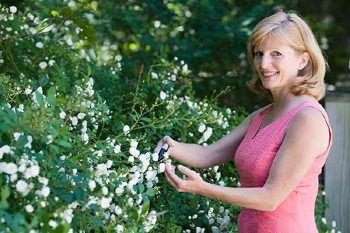
How to Plant Shrubs
Plant your shrubs in a place where the soil is moist and where they get plenty of sunlight, like most other plants. Shrubs are hardy, however, so plant them just about any time of the year, so long as the ground isn’t frozen.
Planting Shrubs
Dig a hole twice as wide and almost as shallow as the root ball of the shrub. Make sure the soil in the hole is loose, so the roots penetrate into it and grab hold. If you replant a potted shrub, gently lay the shrub on its side and tap the pot to loosen the root ball, which makes it comes out easier.
Once you have the shrub out of the pot, take a shovel and tap the root ball to loosen it up, so you can plant it in the hole. If you are trying to plant a shrub that has its roots wrapped in plastic or burlap, partly remove the burlap. Completely remove plastic and place the shrub in the hole.
Bury the roots up to about an inch from where the roots meet the trunk. Add soil to the mound and make sure to tamp it down (lightly) with a shovel or your foot, to make sure that the shrub is held in place by the dirt. Form a temporary water basin around the shrub, so the water penetrates the soil and is absorbed by the dirt.
If the root ball is dry, make sure there is a hose trickling water into the hole while you’re planting.
Caring for Your Shrub
Keep a close eye on the shrub, to make sure that there’s no sign of moisture stress. Do this for the first couple of years, until the shrub is settled in. If you see signs of wilting leaves or dry soil, water the shrub. You don’t want to flood shrubs but, instead, make it a nice slow stream, so that the water can soak in, allowing a nice deep root system.
Certain shrubs need to be covered during the winter time, to protect them from the cold. Do all of these things and keep the area under the shrub mulched, and your shrubs should live longer and healthier lives.
Planting shrubs requires a little bit of work, because shrubs tend to be larger than most plants in your yard, but learning how to plant shrubs is basic and straighttforward.
How to Plant a Garden
Gardening is a popular hobby for people around the world, but many people aren’t sure how to plant a garden. For many, gardening is much more than just a pastime. In many cultures, gardening is a mark of self-sustainability and a way of life.
Home-growing vegetables can be a cost-effective method of getting produce. Anyone can garden, with some basic knowledge and a little hard work.
Choosing an Area for the Garden
When learning how to plant a garden, selecting an area for planting is the first step. Choosing the right spot ensures your plants have every opportunity to thrive.
Place the garden plot away from any buildings or trees, since these block valuable sunlight. Place the plot near enough to a water source, like a house spigot.
Protect the area with a fence. Your garden fence doesn’t have to be as high as a typical backyard fence, but tall enough to shield it from rabbits and other rodents that could disturb the garden’s contents. Add chicken wire between the fence posts, or ensure the fence posts are arranged close together.
Sunlight in the Garden
Select a plot that gets good exposure to sunlight, especially in cold climates. Start with a small garden, if you’re an inexperienced gardener. Expanding the garden in future seasons is a better alternative than taking on too much and letting plants die in a garden that is too big.
Examine the soil in your area of choice. Clay-based soil and sandy soil are not ideal for most crops. Apply compost to the ground if you have clay or sandy soil.
Garden Planting Tip
Take note of the garden plot after a heavy rain. Fill in low areas that collect water with extra soil.
Preparing the Garden
Add organic matter to the soil to enrich it—dead leaves, manure and peat moss serve as great supplies of nutrients. Soil is broken down into three general types.
- Sandy – Large particles, does not retain water and nutrients well.
- Clay – Small particles, holds in water, changes temperature slowly.
- Loam – Variety of particle sizes, lots of organic matter, drains well.
Add organic material prior to planting, but also add it throughout the year, to continue to supplement soil nutrients. As for pH levels, most plants thrive in slightly acidic soils (pH between 5 and 7).
Planning the Garden
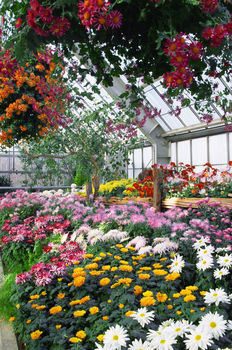
How to Plant a Garden
Plan the garden ahead of time; map out planting locations during the fall or winter, before planting in the spring. Remove the grass and other obstructions from the desired area.
Use a shovel and spade to loosen up the top 12 to 18 inches of soil, taking out rocks, sticks and other objects that could interfere with the planting. Create planting rows, leaving enough space between each one to walk without disturbing the future plants.
Add four inches of organic material to the top of the plant beds, to even out the topsoil. Rake the soil until it is fine enough to plant. Leave the more coarser soil beneath, to maximize water retention.
Add fertilizer about two weeks prior to planting, making sure the fertilizer is rich in phosphorous and nitrogen.
Planting Rows
While rows are ideal for most garden plants, not all crops can be planted in rows. Plant corn in a square or rectangular block, to allow it to be pollinated. Each particular seed packet provides specific instructions about row spacing and seed placement.
Create small furrows (about a half inch deep) to hold your seeds. Place several seeds in each hole, unless the seed packet specifies otherwise. Cover the seeds with loose soil.
Tending to the Garden
Weed the garden on a regular basis. Consider laying down mulch, if weeds become a big problem. Mulch prevents sunlight from reaching the soil surrounding your vegetables, making it difficult for weeds to grow.
Maintain consistent water flow to the plants. Ensure your garden plants receive at least one inch of water per week, including rainwater. Do not water the plants just before sundown.
Special Planting Tips – How to Plant a Garden
Use only old manure as a fertilizer. Fresh manure can be harmful, especially to young plants.
As a rule of thumb, leafy plants demand more fertilizer than pod plants.
Store seeds in a cool place like a basement or cellar when not in use to ensure they remain fresh.
Crop rotation can reduce disease. Consider planting different vegetables in a particular area of the garden year after year.
Be sure to know how long seeds tend to keep. Some seeds, like onions, last only a year while others, such as lettuce, can last up to six.
Harvest vegetables in the morning, after the dew is dried.
Be creative in planting your garden and, with practice, you’ll find what you enjoy growing best. Caring for your garden properly ensures food on your table all summer long, once you master how to plant a garden.
